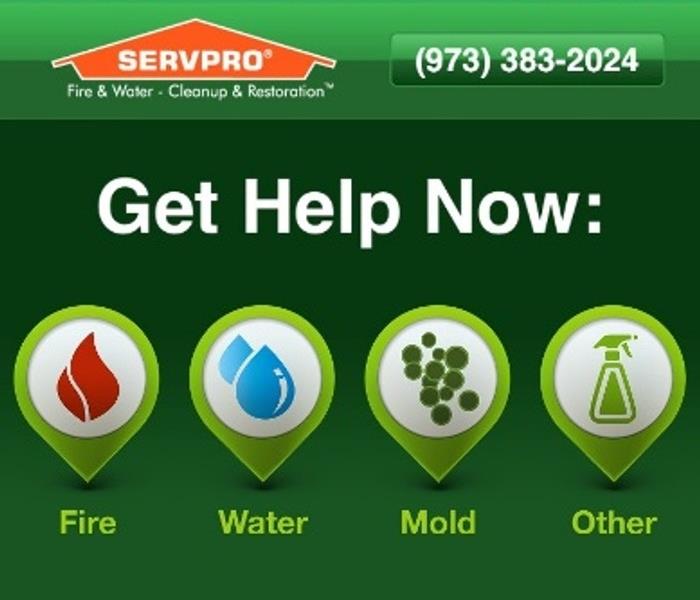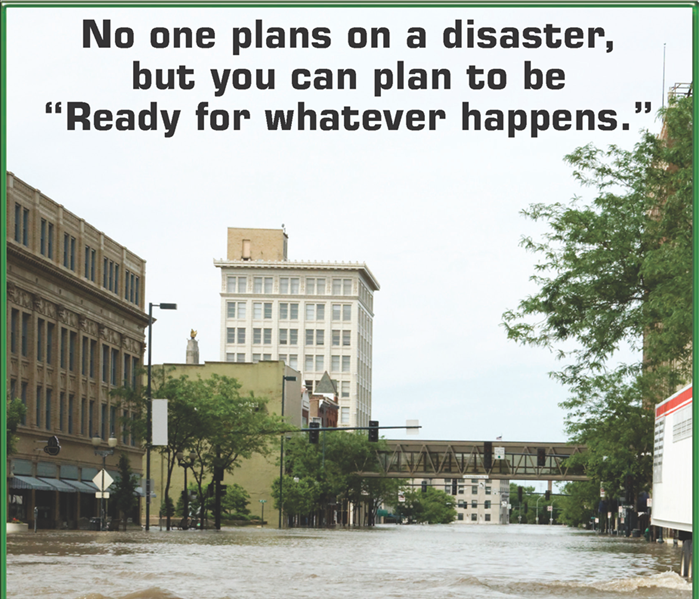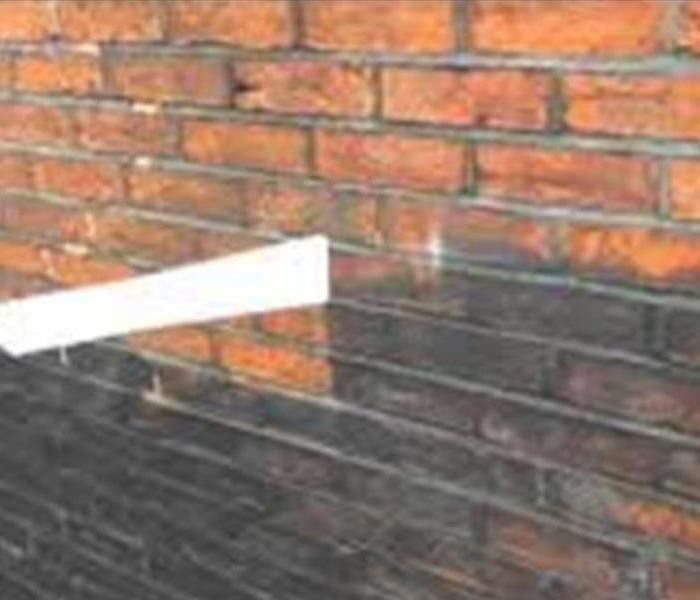Recent Commercial Posts
Serving the Community, One Business at a Time | SERVPRO of Wayne
1/1/2025 (Permalink)
 SERVPRO of Wayne is Here to Help® your business with any size disaster.
SERVPRO of Wayne is Here to Help® your business with any size disaster.
We are so grateful for all of the amazing businesses that we have here in the Wayne community. We know that it takes a lot of work to run a successful business and that being a business owner is more like a lifestyle than a simple job.
All of the schedule-making, supply ordering and managing of day-to-day tasks can keep you busy from sunup to sundown! You shouldn’t have to do everything yourself, however, which is where we come in.
SERVPRO of Wayne proudly offers our full restoration and cleaning services to commercial properties in our community 24/7.
We Are Here for the Disasters
Disaster situations happen in the blink of an eye and can leave your business seriously damaged. This is especially true if a disaster occurs overnight or while no one is in your building to immediately take action. If you are dealing with a large-scale fire, flood or storm disaster, a simple phone call to our restoration team is all it takes.
We are trained in large-loss recovery, and we will jump right into action to help minimize the disruption to your life and to your bottom line. We will prioritize your recovery by arriving immediately and by staying focused on the task at hand. We will remove debris, clean and sanitize your space, and we can even rebuild parts of your building that were too damaged to be restored.
We Are Here to Keep It Clean
If we had to guess, we would assume that one of your least favorite tasks as a business owner is all of the cleaning and upkeep that you have to keep track of. While you may be fortunate enough to have a cleaning staff on payroll, some situations require a specialized hand. Our team is trained to handle deep carpet cleans, HVAC cleaning, upholstery cleaning and even stubborn odor removal.
We also offer our general cleaning services if you need help with routine cleanings. Having a clean building is not only important for your customers’ satisfaction, it is also important for the health of your staff! Removing dust, dirt and allergens from your building can support the health of everyone under your roof.
We Are Here When Life Gets Tough
Life can get messy, and unexpected situations can leave you with a lot of questions and even more emotions. Biohazard situations like crime scenes, vandalism, medical emergencies and sewage leaks can take you by surprise and leave serious messes for you to deal with.
In these situations, it is important to have a professional handle your cleanup. Hazardous substances can be dangerous or even deadly to handle, which is why we come fully equipped with the proper safety gear and PPE to get the job done.
We are also trained to handle dangerous mold infestations! Mold can grow quickly and can settle into a massive infestation in just a few days. If you discover mold somewhere in your building, don’t disturb it. Some mold spores can be dangerous to breathe in, so call us instead so we can contain the area and take care of your infestation quickly.
Our team is here for you, and we want your business to succeed and thrive in the Wayne community. Call us day or night, and we will help keep your business running smoothly!
Need assistance for your commercial property? Schedule one of our commercial services today.
What to Do When Disaster Strikes at Work | SERVPRO of Wayne
3/15/2024 (Permalink)
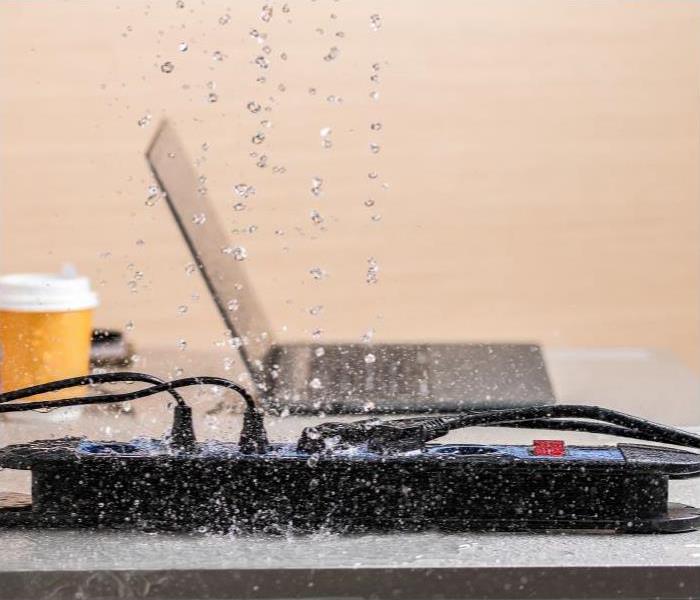 Your business doesn’t need to suffer when disaster strikes! Call SERVPRO of Wayne to restore your office to preloss space.
Your business doesn’t need to suffer when disaster strikes! Call SERVPRO of Wayne to restore your office to preloss space.
You are busy minding your own business in your office putting the finishing touches on the staff schedule or sending an email confirming a meeting when one of your employees rushes in. There’s a fire! The ceiling is leaking! The basement is flooding! No matter the situation, a quick reaction is necessary in order to stay in control.
After you jump into action to get the situation handled or the authorities are called, it can be really overwhelming to look around your damaged building. What do you do? You call SERVPRO of Wayne, of course!
Tackling Water Disasters
Water disasters are one of the most common calls for service that we encounter. Commercial properties and buildings are often equipped with extensive water systems that have pipes and water lines running behind walls and under floors, and any of them can burst at a moment’s notice.
Water disasters can also occur when strong storms with heavy rain come to town, which means you could be dealing with significant structural damage on top of water damage.
Our water damage restoration team is trained in large-loss recovery, so we are the right team to call whether you are knee-deep in water or are holding out a bucket to catch the rain. Our team will dry up all of the water with our industrial air movers and blowers and we will quickly address repairs to help you overcome your situation faster. The faster we move, the better chance you have of avoiding serious structural problems or even mold infestations.
Responding to Fires
Fire can be a nightmare for anyone, but especially for business owners. No one wants to think about the possibility of their precious building going up in flames and taking your inventory or product with it!
Thankfully, our local fire department can help get any fire emergency under control in the efforts to minimize damage. However, once the fire is out, the authorities will have to leave. Get us on the phone right away so our fire damage restoration team can go to work for you.
We are trained to remove damaged debris, and we will work hard to clean and sanitize your entire space. We can also employ our smoke deodorizers to ensure every smoke odor particle is removed from your space. Once your building is clean, we can address any repairs that are needed. We can even tear down and completely rebuild sections of your building that were damaged beyond repair.
Our Construction Process
Did you know that in addition to our restoration services, our team is also certified and trained in commercial cleaning and construction? We can deep-clean your carpets, address a potential mold infestation and even clean out your air ducts and vents.
In addition, we can also help you expand your business! We are a full-service construction crew, which means we can take your dream and turn it into a reality. Our team can work with you to create plans and then we will bring it to life to give your building the expansion or facelift that it deserves.
Need assistance at your commercial property? Call SERVPRO of Wayne today.
How Can I Efficiently Dry My Damaged Wayne Café?
7/27/2022 (Permalink)
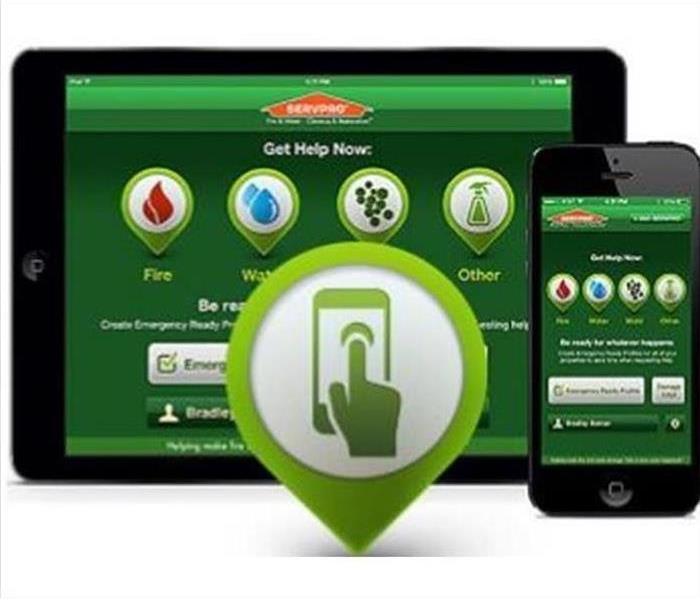 SERVPRO Mitigates and Dries Water Damaging Events to Commercial and Industrial Sites in the Greater Wayne Area. Call about Our ERP Plan!
SERVPRO Mitigates and Dries Water Damaging Events to Commercial and Industrial Sites in the Greater Wayne Area. Call about Our ERP Plan!
By manipulating drying elements, we can find the blend of conditions that creates the most efficient drying and recovery for your business.
We provide fast and reliable responses to water losses in Wayne businesses like your cafe. It would help to designate the right professional restoration team to recover the loss quickly. Situations can develop, from a plumbing breach to an overflowing sink in the prep areas or bathrooms. With a 24/7 response to emergencies and pre-stocked trailers full of water restoration tools and equipment, our SERVPRO team can help.
There is a finite amount of time to address water damage in your Wayne cafe before the losses become so widespread and problematic that your doors have to close temporarily. Our objective with our fast response is to set up containment barriers to designate a specific drying zone to more directly manipulate elements of moisture removal and evaporation.
What Factors Are Involved in Efficient Drying Processes?
With the training that our water restoration technicians (WRT) and structural drying (ASD) professionals undergo through the Institute of Inspection, Cleaning and Restoration Certification (IICRC), we have extensive knowledge of the theory of water drying. The science behind manipulating various factors to achieve a more efficient drying objective changes rapidly in every situation. This change means that the balance in this containment area of your business needs to get continually monitored for effectiveness. The three primary areas that affect the drying process are:
- Humidity
- Temperature
- Air Flow
How Can SERVPRO Professionals Regulate Humidity?
Reducing the humidity in the cafe helps in more than just improving the pace of drying in the established zone. A lower moisture content level prevents the warping and distortion of furniture like stools, prevents bloating of fiberboard cabinetry or countertops, and reduces the likelihood of microbial threats. Regulating the moisture content in the drying zone established by our responding technicians involves using several sophisticated tools and equipment:
- Desiccant Dehumidifiers
- Low-Grain Refrigerant (LGR) Dehumidifiers
- Evaporative Drying with Air Movers
Can Varying Temperatures Impact the Drying of Water Damage?
As you might suspect, higher temperatures can help to make evaporation more efficient in the drying areas. Since the point of containment is to allow you to continue functioning in a limited capacity while restoration gets underway, you cannot increase the comfortable operating temperatures of your cafe to suit this need. Instead, our technicians rely on portable electric heaters and other devices to manipulate the surface temperature of target materials and contents in the drying zone.
This drying and noise can happen after closing your doors for the day to limit stress on your patrons. At the same time, specific mitigation steps might be necessary, like extracting standing water to protect the structure and prevent further complications; much of the restoration work your cafe needs can happen after hours.
How Can We Manipulate Airflow to Dry the Café Faster?
Air movement is an essential mechanic for drying up saturated elements, reducing moisture content, and addressing other concerns that could result from water exposure in your business. Even with the efficiency and direct airflow that air movers can provide, they are often a louder addition to the restoration process. Much of the tools to promote drying from surfaces get used when we are not disturbing your customers or business. Some of the popular choices for effectively providing evaporation include:
- Air Movers - High-velocity fans in our inventory can isolate specific damaged materials and hit them with a direct and consistent blast of heated air.
- Positive Pressure Systems - By making small drill holes behind the baseboard in the damaged room, we can insert hoses to push dry air into structural cavities to prevent unnecessary tear-out.
- Containment - Containment is one of the fundamental factors of this drying science, as a smaller work area can help target wet materials and contents more directly.
When Can I Get My Doors Back Open After a Loss?
While our technicians work hard to prevent your cafe's temporary closures, these situations are sometimes unavoidable when the migration of water losses has affected a substantial area. We can work quickly to extract, dry, and restore your business to limit the time that you remain closed to your customer base.
Unexpected water loss incidents can be a threatening presence to your business, but our SERVPRO of Wayne professionals can help. You can call us today at (973) 546-4977 to begin the restoration of the damage to your shop or to set up an Emergency READY Profile Plan (ERP) to be more prepared for disasters in the future.
We Get You Back In Business After A Water Damage Disaster In West Milford
5/26/2022 (Permalink)
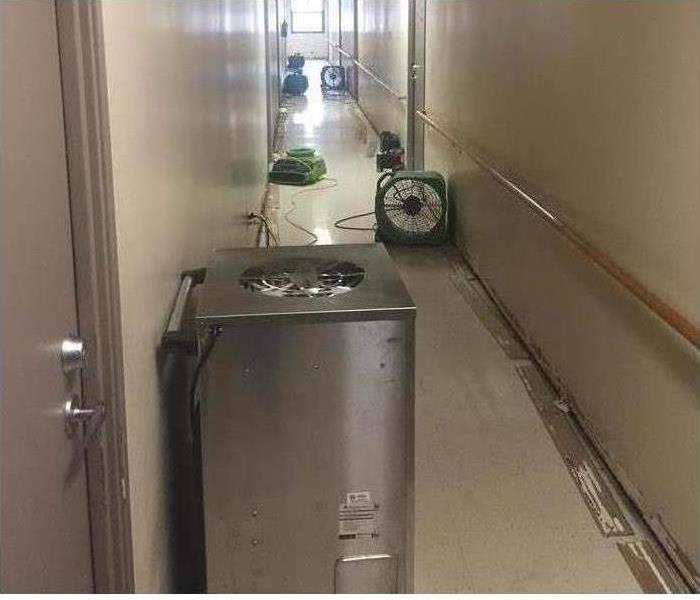 We have the state of the art equipment ready 24/7 to restore any damage big or small to your property.
We have the state of the art equipment ready 24/7 to restore any damage big or small to your property.
Shave Time Off Water Removal at Your West Milford Salon
Water losses at your hair salon and spa in West Milford are disruptive to your stylists, estheticians, and, most importantly, your clients. With so many water sources, from shampooing bowls, manicure and pedicure bowls, soaking basins, sinks for cleaning and disinfecting, restrooms, and washers/dryers for those fluffy towels, it is surprising that water crises do not happen daily. If a plumbing break, an appliance malfunction, or a significant spill occurs, get professional water extraction help.
Overnight, your salon’s freshwater supply line burst, and at opening time, everyone was ankle-deep. To avoid canceling a whole day of appointments, request water removal from West Milford’s disaster recovery experts.
Our crew arrives with a fully-stocked service vehicle, ready with pumps and truck-mounted extractors. If your electricity is disconnected temporarily for safety, no delay in delivering our help is necessary. SERVPRO brings power generation options on every service call. Upon arrival, we make sure your primary water connection is shut off and consult with you about arranging repairs to the pipe through your landlord or if you own the building.
We then quickly assess the scenario and develop a plan. If any water damage on the premises is more profound than two inches, we start a gas-powered submersible pump in that area. We skim the surface with wanded extractors to pick up the remainder of the visible water.
Because most of your space is tiled, we hope little water migration occurred. SERVPRO does not depend on wishes, however, so we use a thermal imaging camera to seek any hidden water. We measure moisture levels in any porous structural components like baseboards to be confident when we begin drying procedures; we neither under nor overdry.
After we are sure all liquid water is gone, air movers and dehumidifiers complete the moisture reduction to normal levels. Throughout this phase, we monitor ambient and structural moisture levels periodically. If you called SERVPRO immediately, chances are excellent styling and pampering are back on the menu fast.
SERVPRO of Wayne is ready 24 hours a day to help mitigate and remediate water emergencies for our neighboring businesses. Call (973) 546-4977 anytime to schedule an assessment and project implementation.
Initial Fire Restoration for Wayne Offices
3/22/2022 (Permalink)
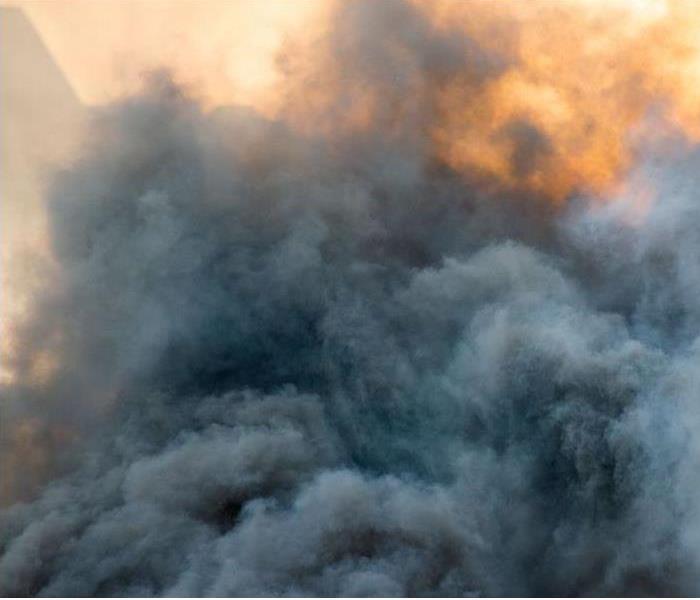 The first step to resolving fire damage is calling your local trained professionals at SERVPRO of Wayne.
The first step to resolving fire damage is calling your local trained professionals at SERVPRO of Wayne.
Immediate Emergency Services Can Keep Wayne Offices Open During Fire Restoration
Emergency services play a significant role in restoring and recovering fire-damaged commercial properties. Our professionals respond fast with mitigative strategies to help when it matters most.
Barriers and Staging Area
The first step of fire restoration in Wayne offices to prevent the closure of the building is to establish a work zone. Erecting physical barriers around the damaged portions of your property prevents the spread of fire loss effects and stops cross-contamination. Similarly, a staging area also reduces cross-contamination by making needed tools accessible nearby.
Content Relocation and Management
It is also essential to find a suitable solution to protect the contents and essential documents of the office building from harm. It can be much easier to resume partial production and operation of your business when much of its furniture, electronics, and needed records have been preserved and protected by our responding technicians. We even have off-site solutions for content protection and restoration, including:
- Cleaning
- Deodorization
- Drying
- Safe Storage
Water Removal
While property owners are grateful for the extinguishing methods of first responders, the water damage left behind after the fire is quelled can often be as damaging as the fire itself. We must work quickly to extract standing water and pull out moisture from porous materials like glue-down carpeting and drywall.
Fire Debris Removal
Another possible method of preventing the closure of your business during fire restoration is a swift removal of fire debris from the grounds. This is one of the most problematic and threatening conditions for employees and customers, as debris often features carcinogenic particles that can be agitated and circulate in the environment. We must work fast to discard these solids safely.
With the right response by experienced professionals, it can be feasible to keep your doors open during the fire restoration phases to come. While every situation is different, our professionals work with property owners to help restore the structure as quickly as possible. You can trust our SERVPRO of Wayne team and call us today at (973) 546-4977.
Professional Office Flood Damage Restoration in Wayne
2/22/2022 (Permalink)
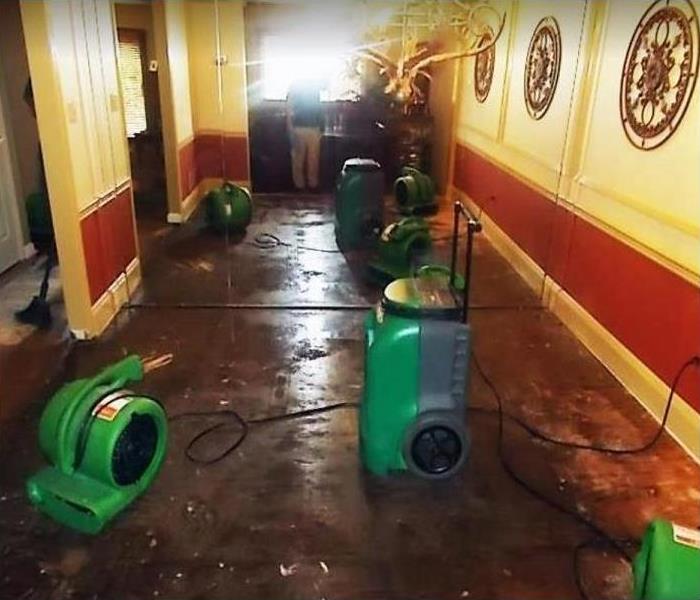 Commercial water damage includes not only the cost of repairs, but also the potential for lost income and employees out of work for some time.
Commercial water damage includes not only the cost of repairs, but also the potential for lost income and employees out of work for some time.
SERVPRO Helps Commercial Properties in Wayne with Flood Damage
Any company confronted with flooding brings stress and chaos, especially if it means closing down your Wayne office due to damage. Not only will you have to think of the cost of repairs, but you also have the potential for lost income and employees out of work for some time. This is why it is better to act fast and enlist the help of skilled water restoration technicians (WRT) at SERVPRO to restore your offices to full operation.
Once you call us for help with commercial flood damage in Wayne, we will mobilize our Green Fleet as soon as possible. The quicker we can get there to begin mitigation, the better chance we have of limiting your downtime and costs. In the meantime, the following measures will help you to ensure everything goes smoothly:
- Safety First – In any water emergency, especially flooding, electrical wires, outlets, and devices pose a threat. If possible, shut down power to the area where the flooding is or the entire building. Always remain alert to your surroundings and never use appliances while standing on a damp surface.
- Shut Off the Water Supply – If the flooding is internal from a pipe, turn off the water as soon as possible.
- Salvage Whatever Possible, Within Reason – After the water gets turned off and the building seems secure, you can attempt salvaging anything not damaged yet. However, it is often better to let professionals navigate your building so that you are not tracking moisture or contaminants into unaffected areas of your office space.
Skilled restoration technicians should always handle stormwater removal or burst pipes. SERVPRO knows how to get in, assess the damage, begin water removal services and facilitate drying. We work to restore versus replace whenever possible, but the goal is always to make sure your office is “Like it never even happened.”
SERVPRO of Wayne is available 24/7 when you require emergency flood damage assistance. Contact us by dialing (973) 546-4977 or requesting help online!
How to Perform Commercial Fire Damage Restoration in West Milford?
2/4/2022 (Permalink)
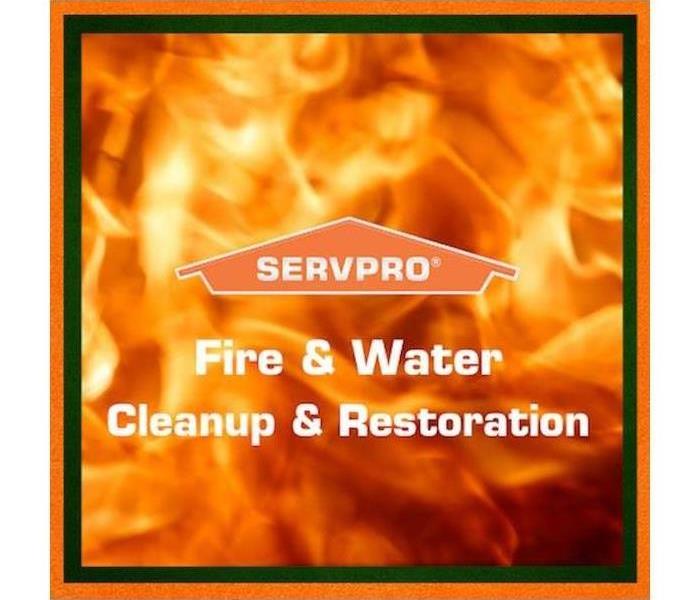 No matter the amount of fire damage in your restaurant kitchen, SERVPRO commercial damage restoration techs have you covered from start to finish.
No matter the amount of fire damage in your restaurant kitchen, SERVPRO commercial damage restoration techs have you covered from start to finish.
Hire SERVPRO to Perform Commercial Fire Damage Repair in West Milford
Fires in commercial establishments usually happen because of human error like misuse of equipment, arson, unmaintained electrical systems, and improperly maintained appliances like furnaces, water heaters, and boilers. When a fire affects a business like a restaurant, it can be overwhelming to deal with the aftermath. The damage can increase even after putting out the fire because of toxic chemicals, water damage, and corrosion from soot.
External factors like vandalism can threaten additional loss when not managed promptly. To prevent expensive repairs, call SERVPRO to perform commercial fire damage restoration in your West Milford restaurant. The steps we can take to restore your restaurant to its preloss state include:
- Evaluating fire and smoke damage
- Recovering and restoring damaged contents
- Stabilizing the property
- Removing odors
Evaluating the Damage
Our SERVPRO fire and smoke damage restoration technicians (FSRT) can assess the damage and create a customized restoration plan specific to your needs.
Recovering and Restoring Damaged Contents
This involves identifying all the salvageable and unsalvageable contents. We sort and clean the salvageable contents and dispose of the unsalvageable ones.
Stabilizing the Property
Our SERVPRO team can establish security measures like boarding up openings and performing water mitigation. We can remove the water used to fight the fire using portable extractors.
Removing Odors
Fire odors can spread widely even with HVAC system shut down and automatic fire doors. We can use dry-ice blasters to eliminate soot and smoke residues and char from building surfaces. This equipment blasts microparticles or carbon dioxide pellets at supersonic speeds using compressed air. The particles or pellets then sublimate on impact, lifting contaminants off the surface.
Our SERVPRO technicians can also use a Vaportek unit to remove odors. A Vaportek system is a compound of natural oils sealed into a membrane. The ingredients of the compound volatilize into the air passing through the membrane. Air currents distribute the Vaportek molecules, which react with the odor molecules and neutralize them upon contact.
SERVPRO of Wayne can provide you with high-quality commercial fire damage repair services. Call us any time at (973) 546-4977.
SERVPRO Administers Safe and Thoughtful Fire and Smoke Restoration at West Milford Commercial Properties
1/10/2022 (Permalink)
 Our SERVPRO team entertains the students in West Milford even as we mitigate the fire and smoke damage at their preschool
Our SERVPRO team entertains the students in West Milford even as we mitigate the fire and smoke damage at their preschool
Commercial Fire Damage Puts Private West Milford Preschools in Crisis
A fire that happens in one of the offices at your West Milford preschool is much different than one occurring in the kitchen. Hopefully, a fire that starts in the kitchen from food cooking never gets doused with water as a paper-based fire can. Spraying water on cooking or electrical fires can aggravate the problem instead of solving it.
Different types of fire in your West Milford facility require different types of commercial fire damage mitigation and cleanup. Both types need us to secure the area before we begin, including electrical and other safety issues that require stabilizing.
If water was used in either type of fire, we need to extract that moisture before we can begin cleaning and restoring. Without it, damp conditions would continue behind newly installed materials and within enclosed spaces, eventually leading to destructive and expensive problems in the future.
Fire and Smoke Damage Restoration and Cleanup
We want to make everything “Like it never even happened” for you. Also, fire, if children see it or experience an evacuation, can become fearful of returning. We can make it so no traces of the fire, including odors, exist to bring forth bad memories in your students.
The educational materials you used to teach your student body, as well as mats for nap time, activities, and other facets of the typical day at your preschool, can get ruined during a fire. Whenever we come across things that cannot get wet without becoming water-damaged, we list these on an inventory sheet to make it possible for you or your staff to replace them with equivalent items quickly.
Things that we can get clean for you and restore them to pre-damaged condition through different techniques can help get your preschool open again soon. Objects made of durable plastic-like toys can get stripped of soot in an ultrasonic water bath. Walls and doors need special treatments with dry sponges, as well as ceilings and trim.
The areas near the corners between walls and ceilings can experience an electrical charge build-up, continually attracting soot particles. We use special cleaners that stop this from happening, so walls stay clean. Our air scrubbers and our Odor Control Technician (OCT) fogging agents also help stop this from happening.
Carpeting also needs odor control, but we do this through efficient carpet cleaning. Not only do we clean the soot that fell onto the floor and permeated the carpet, but it also removes the odor and replaces it with much nicer smells that young children often find enjoyable. If allergies are a concern, we ask that you discuss this with our staff. They are highly skilled in using alternative, unscented products, as well.
SERVPRO of Wayne helps all kinds of businesses near Pompton Lakes, Ringwood, and Haledon recover swiftly from disasters like fire damage. If you need a flexible and highly qualified mitigation and restoration team, call us 24/7 at (973) 546-4977. We are here every day of the year.
The Effects of Commercial Water Damage to Wayne Offices
9/13/2021 (Permalink)
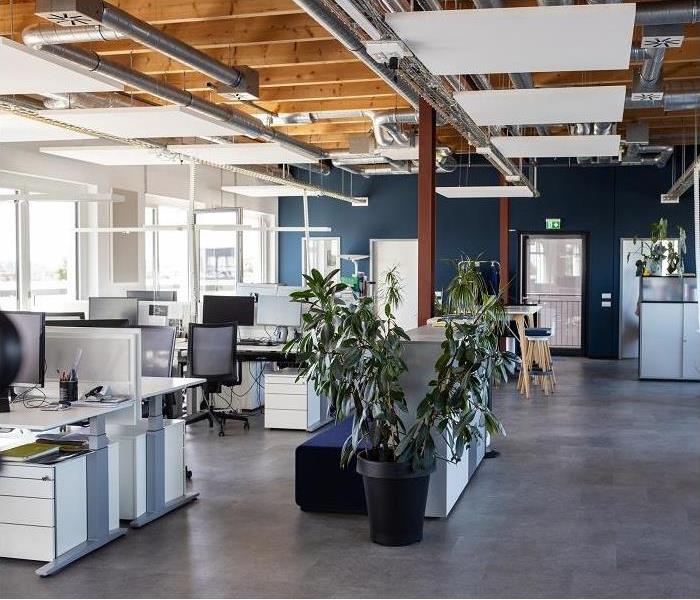 Water can damage everything in offices, from electronics and documents to structural items.
Water can damage everything in offices, from electronics and documents to structural items.
Specialized Approaches Help Save More Items after Water Damage in Your Wayne Office
A broken pipe in your Wayne office can release several gallons of water if not caught in time. Incidents that happen at night are usually the worst. As the water spreads indiscriminately, it affects different items, which can lead to widespread damages. A speedy response is the best way to save more items, but when that is not possible, other approaches can help.
A wooden floor can be ruined irreparably in a case of commercial water damage in your Wayne office if the standing water pools for long. Absorption of significant amounts of water pushes moisture content beyond the average 10% leading to swelling of the floorboards. Buckling or other forms of permanent damage can occur, necessitating the replacement of the entire floor. Our SERVPRO technicians can take steps to help save your floor. After extracting any standing water, we can tape a plastic sheet over the surface and then use air movers to vent air into the chamber for faster, uniform drying.
Sitting Water Can Lead to Mold
In case the floor of your office is carpeted, water can still cause irreparable damages. Prolonged exposure to water causes separation of the backing. Mold can also form beneath the carpet if not dried properly. Our SERVPRO technicians use water extractors to remove most of the water from the carpet. We can then utilize a specialized procedure such as floating the carpet to improve drying. The process involves placing an air mover under the carpet then running it at moderate speed, improving drying.
With several documents, ranging from files to books, in an office, the likelihood of damage from the spill is high. While it is hard to restore documents already ruined by water, it might not be feasible to throw them away. Our SERVPRO technicians can use specialized methods to stop further deterioration of crucial documents. Immediately after arriving at the site, we take wet documents and store them in a freezer facility. We then use different advanced techniques to dry them, including:
- Vacuum Thermal Drying
- Freezer Drying
- Vacuum Freeze Drying
- Air Drying
- Dehumidification
Water damage incidents can be frustrating, but with help from a professional team, they are easier to handle. Call SERVPRO of Wayne to help. You can reach us any time at (973) 546-4977. We're Faster To Any Size Disaster.
We Get You Back to Business In Wayne After Water Damage
7/16/2021 (Permalink)
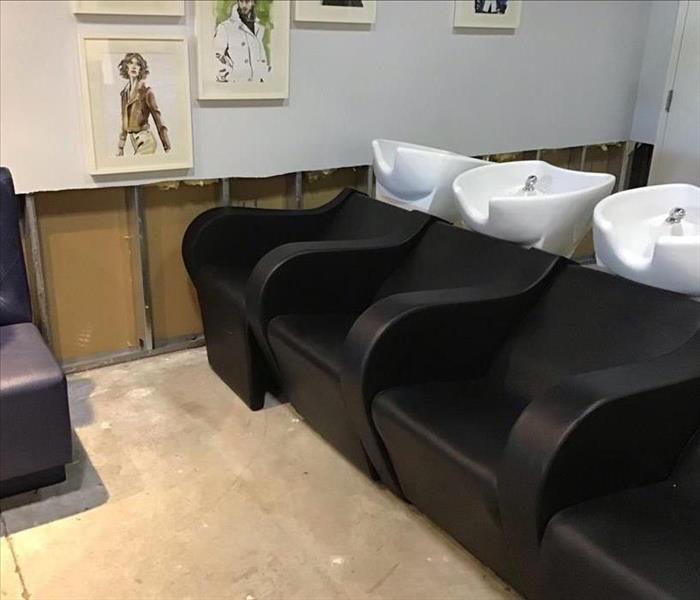 SERVPRO swiftly provides flood cuts and water damage cleanup for Wayne area convenience stores and beauty salons.
SERVPRO swiftly provides flood cuts and water damage cleanup for Wayne area convenience stores and beauty salons.
Water Damage That Threatens Your Wayne Convenience Store
The convenience store that you run in Wayne might not be the only one on your side of town, and even more importantly, it might not even be the only one on the block. You try to diversify what products and food your store can offer those before they set off on daily commutes, or to help them to choose easy solutions for lunches and dinners so that you can compete with the other options customers have to choose.
With much of the floor space of your building used as a sales area, water damage in your Wayne convenience store or beauty salon is even more problematic when happening in the tight quarters where fresh food gets prepped and prepared. Even without a substantial water damage incident, the signs of excessive moisture and dampness must get addressed quickly to prevent the spoiling of shelved ingredients and products used to continue to prepare the food items expected by loyal patrons.
Our SERVPRO professionals understand how important it is to manage a space you must continue to use for your business to stay operational. In situations where drying is the most critical step in recovery, small yet powerful tools like the low-profile air movers can force heated air throughout a smaller workspace to evaporate moisture and dampness, even what has been absorbed into nearby materials and surfaces. We work with the aim of zero disruptions to employees and patrons.
Water Clean Up Equipment
Provided that the power has not become severed to a property, items stored in coolers and refrigerators can remain stocked there, understanding that these appliances are not the source of the water damage affecting the convenience store. This permits employees to have access to food items that must get prepared and ready for customers continually. Several well-placed dehumidifiers can capture the circulating water vapor and reduce the chances of absorption into products on the display shelves.
With the strategic placement of the air movers in this kitchen area, employees can work around the recovery efforts when necessary. By approaching a situation quickly, We're Faster To Any Size Disaster, and extracting pooling water and drying out damage directly with the use of advanced equipment, our SERVPRO team can swiftly restore water damage. "Like it never even happened."
We strive to provide businesses in the area with an experienced response, tailoring the equipment and practices used to the situation and damage present in your store. When a job becomes too much to handle, let our SERVPRO of Wayne professionals help. Contact us anytime at (973) 546-4977. Our business is to keep you in business.
Does Commercial Flood Damage on a Slab Concrete Floor Need Professional Cleanup in a Wayne Business?
6/19/2021 (Permalink)
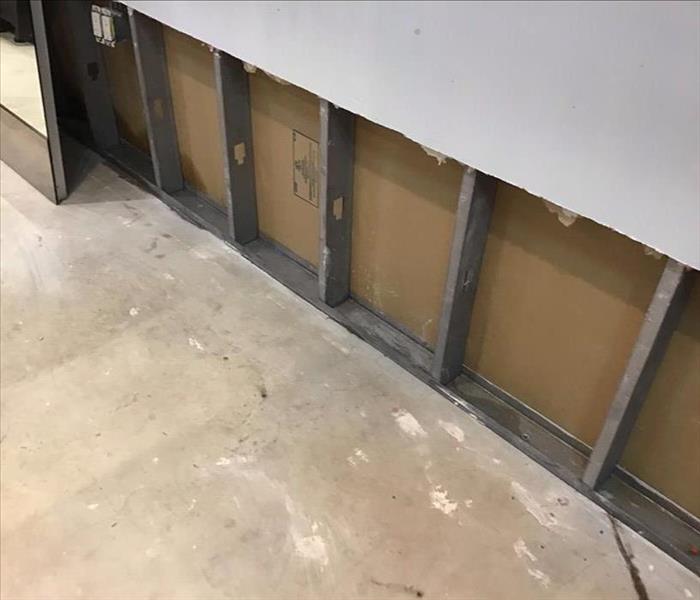 SERVPRO offers minimal demolition with flood cuts for Wayne area businesses and warehouses
SERVPRO offers minimal demolition with flood cuts for Wayne area businesses and warehouses
SERVPRO Techs Can Perform the Flood Restoration Actions Needed for Wayne Commercial Properties
Many businesses utilize Wayne warehouse spaces as the choice for a location. The slab floors are usually easy to clean, take paint well for a more finished look, and be disinfected when needed, such as a sewage backup or floodwater with contaminants.
SERVPRO recommends professional flood damage mitigation in Wayne commercial properties for several reasons such as:
Professional Flood Restoration Avoids Potential Issues
- The water is likely to have contaminants if it is groundwater inside the facility and needs handling as a biohazard
- Water migrates and can wick into walls
- Elevated humidity levels may affect stock stored in cardboard
SERVPRO technicians have the equipment and experience to test the water and determine any locally present bacterium or pathogenic elements requiring treatment from biocides or antimicrobial solutions. Also, if the water wicked into sheetrock or wood on the walls, it can get found, dried, and disinfected. SERVPRO technicians perform interior air humidity readings to ascertain if items within the warehouse need to be covered during the mitigation process or moved to a safe, secure area to ensure no damage occurs. Most of all, the team at SERVPRO works to get the warehouse reopened quickly and working as normal.
SERVPRO of Wayne at (973) 546-4977 handles big and small commercial flood damage cleanup and restoration in Wayne properties. The technicians are available 24/7 and arrive quickly when needed.
How Quickly Can SERVPRO Respond to Storm Damage in Wayne?
5/3/2021 (Permalink)
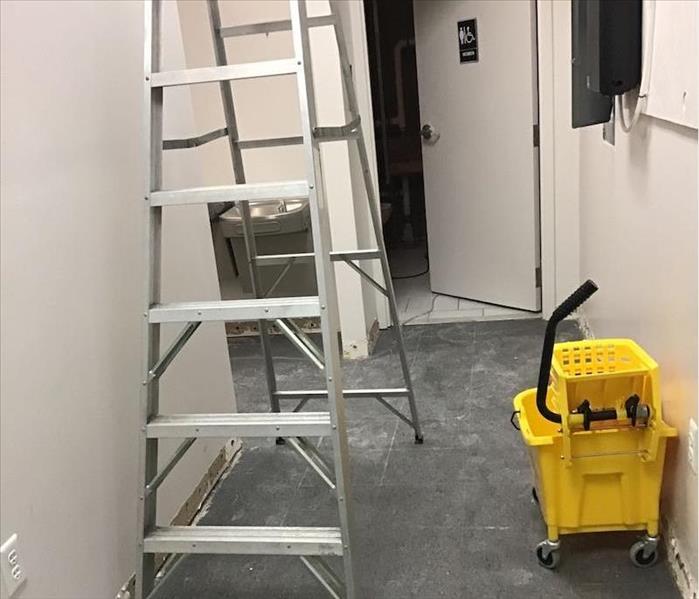 SERVPRO will have your company up and running A.S.A.P. Water damage restoration is our specialty.
SERVPRO will have your company up and running A.S.A.P. Water damage restoration is our specialty.
SERVPRO offers Emergency Service Storm Damage Cleanup in Wayne
The township of Wayne is located in Passaic County, NJ, and has an approximate population of 54,000 people. Wayne is less than 20 miles from Midtown Manhattan, New York. The land was purchased from the Lenape Native Americans in 1695. Many historical events have occurred in the area.
One such event centers around the naming of the Preakness Stakes. In 1868, a gentleman named Milton H Sanford purchased a racehorse for $4000, a tremendous amount of money at the time. He called the horse Preakness. This horse went on to win its first race at the new Pimlico Race Course in Maryland. Future races were named after the first horse to win a race at its track. It is now known as the Preakness Stakes, and the Preakness is the 2nd race in the Triple Crown of racing for thoroughbreds.
There are many activities to consider being so close to New York and the historical events in the area. We have assembled a few that many residents enjoy:
- Dey Mansion Washington’s Headquarters
- Laurelwood Arboretum
- Willowbrook Mall
- Van Riper House Museum
- Terhune Memorial Park
- Schuyler Colfax-House
- Mead-Van Duyne Historic House Museum
- Tintle Park
- Shea Center for the Performing Arts
Dey Mansion Washington’s Headquarters
The Dey Mansion was built in 1770 by Theunis Dey. General George Washington used the homes as his headquarters during Oct-November 1780.
Both Dey and Washington had much in common. They were the same age, large landowners, agriculturalists, and both believed in serving their respective counties and states in a government capacity.
In present times, you can visit the mansion, now museum, and experience the life of the wealthy back in General Washington’s time. There are guided mansion tours, exhibits, and collections to view. The museum is normally open from Wed to Sun from 9 am to 5 pm. However, visitors should plan their trip and confirm the availability of tours and access to the museum in advance during current health issues.
Van Riper House Museum - Terhune Memorial Park
Albert Payson Terhune was an American Journalist, dog breeder, and author. He became well known for his novels he wrote about his collies and his breeding of collies at Sunnybank kennels. He passed away in Feb 1942, leaving his estate, Sunnybank in Wayne, NJ, where many of his beloved dogs are buried. Visitors can view the graves of many of the dogs mentioned in his literary works, the museum, his books, and dog awards at the Van Riper-Hopper Historic House Museum.
Does SERVPRO Offer Storm Removal and Drying Services to Commercial Properties in Wayne?
There is a lot of urgencies to return to normal operations after a storm. Your business needs power restored, commercial buildings must be repaired, and the debris, water, and moisture must be removed to avoid further damage to undamaged finished and unfinished goods.
That’s why SERVPRO responds 24/7 within 4 hours to storm damage removal and drying requests from our commercial clients. We can also bring resources and equipment from other local franchises to assist in the cleanup. Call SERVPRO for:
Call SERVPRO of Wayne for commercial storm removal and drying services in Wayne and surrounding areas. We can help 24/7. Call (973) 546-4977
Who Can Provide Fire Damage Restoration to Wayne Diners?
4/1/2021 (Permalink)
 A fire in your commercial kitchen will put a halt on business. Call SERVPRO and let their technicians get there within a couple of hours.
A fire in your commercial kitchen will put a halt on business. Call SERVPRO and let their technicians get there within a couple of hours.
SERVPRO provides Wayne businesses with professional fire and smoke damage restoration and cleanup
Kitchen fires are always a risk in any restaurant. Thankfully, in most commercial situations, they are contained quickly. However, that does not stop smoke and soot from spreading throughout the building.
Fire & Smoke Damage
If your Wayne diner needs fire damage restoration, SERVPRO has the necessary equipment, experience, and expertise to get the job done. One of the main elements of many diners is their retro booths. There are different components to the booths, including:
- Metal fixtures
- Vinyl booth covering
- Formica tabletops
We use fire restoration techniques that can often restore your booths to preloss condition. These include:
- Specialize wet chemicals for cleaning the vinyl surface
- Dry cleaners for wiping down Formica tabletops
- Wet cleaning for metal fixtures
We test for the type of smoke residue present and put together a plan of action that meets the needs of the situation. Smoke remediation involves using various deodorization methods and tools designed to not only remove smoke residue but neutralize the foul odors as well.
For fire and smoke damage services you can trust, contact SERVPRO of Wayne at (973) 546-4977 today.
Water Damage Done to Your Commercial Property in Wayne
2/27/2021 (Permalink)
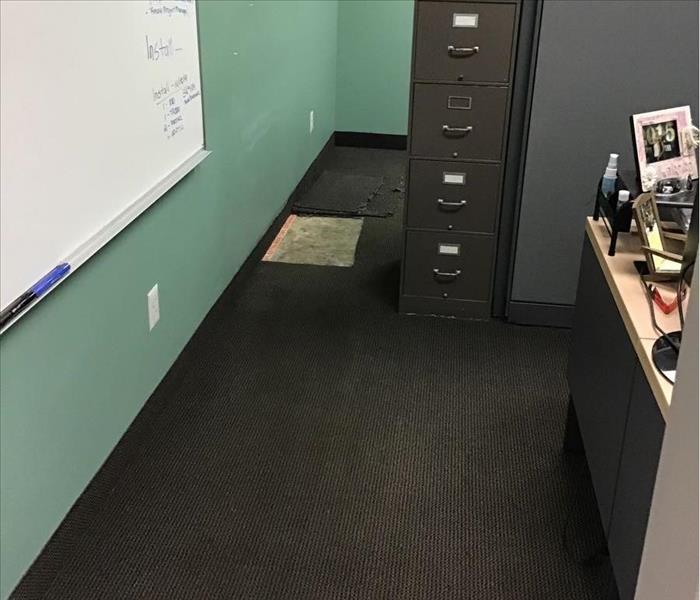 Water damage restoration done to your commercial property should be handled by the pros at SERVPRO. They are ready 24/7 365 days a year.
Water damage restoration done to your commercial property should be handled by the pros at SERVPRO. They are ready 24/7 365 days a year.
SERVPRO can provide commercial water removal in Wayne
Wayne, New Jersey, is a small township located on the southeast corner of New York State at the Hudson River's mouth. The town is about 28 miles from New York City, and it is about 23 square miles in size. The most recent census reports that the small city has about 54,000 people.
Home to several historical sites
The town is primarily known for being the location of several historic sites. The township's parks and recreation department operates three places available to the public to tour by appointment. The Wayne Township Historical commission provides the upkeep and produces historical writings for the Van Riper-Hopper house, the Van Duyne house, and the Schuyler-Colfax house.
The Schuyler-Colfax site was built initially by Arent Schuyler in about 1700, and it was one of the first colonial homes built on the east coast. Eight generations of the family lived there, including governmental, military, medical, and legal representatives. The House was then sold to the township and opened up as a historic site for visitors in 1993.
Another famous town location is the Dey property, owned and operated by the Passaic County Parks and Recreation Department. The gorgeous home was started by Dirk Dey in 1740 and then finished by his son Theunis Dey. In 1780, the estate was famous for serving as Former President George Washington's headquarters during the Revolutionary War.
The city contains several parks and recreation facilities.
Another aspect that attracts people to Wayne Township is that the small city has several public parks. The parks and recreation facilities in the town include:
- Alps Road Park: This property has three soccer fields, two lacrosse fields, and amenities for field hockey and softball.
- Boulevard Park: This facility houses a playground, softball field, and a basketball court.
- Captain Kilroy Park: The public venue is home to Tom's Lake, which provides a swimming area with a beach. It also features a softball field, a basketball, and a volleyball court.
- Dave Waks Memorial Park: The property was formerly known as Barbour Pond, and it now features several synthetic turfs and natural grass fields used for multiple sports. It also has a playground, water fountains, a model airplane flying area, and a paved walking/flying path.
- Friends and Family Park: This facility contains water fountains, a playground, and a dog park for large and small dogs.
SERVPRO can help your business with water restoration services.
If a pipe breaks inside your office overnight, the floors inside it can become saturated quickly. After all of the liquid gets removed through extraction, our SERVPRO technicians can remove the rest of the moisture through the applied structural drying (ASD) process. During the ASD procedures, one air mover gets set up in every affected room, and we add one air mover for the following situations:
- We can add air mover for every 50 to 70 square feet of flooring we find got wet.
- We could add another air mover if 100 to 150 square feet of ceiling or walls above two feet got affected by moisture.
- Our technicians can add another air mover to a room if it contains an inset or offset over 18 inches.
If your office ever gets flooded, call SERVPRO of Wayne at (973) 546-4977.
Get Out of the House for a Black Friday Pop Up Event in Wayne
11/17/2020 (Permalink)
 If you are up for it, go and support your local businesses at the pop up event and get yourself some treats.
If you are up for it, go and support your local businesses at the pop up event and get yourself some treats.
Shop Local with Various Vendors in Wayne
You may be leery of large Black Friday crowds in 2020, so naturally, this small pop up event is a great alternative. You can shop safely with vendors on Saturday, November 28th hosted by Pop Up Next Door & NF8 Media. In addition to shopping, there will be entertainment and food options to make it a fun event for all. Admission is free for the whole family. It begins at 2 pm and goes on until 6 pm. The event is inside, so masks are mandatory. Come out for this great Black Friday event for a unique shopping and entertainment experience!
What Does the Event Offer?
Live entertainment including music
Henna tattoos
Food and drink
Shopping with various vendors
If you need mold removal in your Passaic County business, contact SERVPRO of Wayne anytime, 24/7 at (973) 546-4977. We are available to assist with disasters, large and small.
What is the Quickest Way of Getting Water Out of Commercial Premises?
9/16/2020 (Permalink)
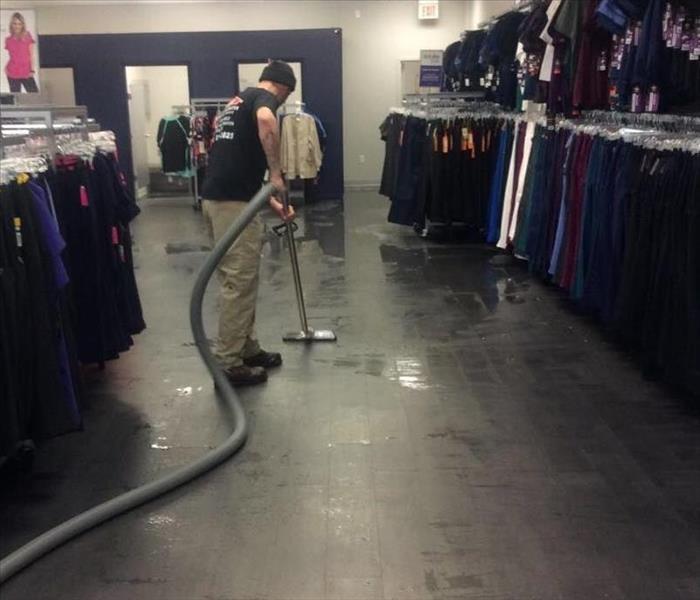 SERVPRO knows how quickly water damage can take over your Wayne business. Call us today, let us keep you up and moving.
SERVPRO knows how quickly water damage can take over your Wayne business. Call us today, let us keep you up and moving.
Commercial Water Removal Requires Significant Resources and Equipment. SERVPRO Offers Wayne Businesses Professional Removal and Drying of Water Issues.
How long should I expect water removal to take?
We recognize that for Wayne, businesses expect a time-efficient restoration of their premises. Water leaks can lead to losses of revenue, especially for those leasing property for others to use. SERVPRO offers a commercial service that allows property managers to communicate directly with our crew chiefs throughout the service. We can provide you with informed information regarding the length of time we expect a water restoration to take. Equally, our technicians can work around the needs of your business. A space with an isolated area of water damage can allow you to keep your business running while working on the affected area. We can position warning signs and barriers to inform members of the staff of the situation.
What water removal services are available for commercial businesses?
- Arriving on-site within four hours of notification of loss
- Institute of inspection, cleaning, restoration and certifications (IICRC) qualified technicians
- Twenty-four-hour emergency call line
Is drying the structure important after water removal?
Wayne's commercial water removal service typically covers both the pumping out of the liquid and the drying procedure. Residual moisture can be very harmful to a structure, leading to mold growth, odor, or discoloration. SERVPRO technicians monitor a damaged area repeatedly to ensure that our methods are efficient and achieving the expected outcomes. It is not uncommon for crew chiefs to return every twelve to twenty-four hours to assess our drying procedure's effectiveness. We can also put in place more aggressive drying equipment if necessary, after job monitoring.
What equipment is used in water removal?
- Water pumps to remove standing water
- Truck-mounted or portable extractors for residual moisture
- Dehumidifiers and air-movers for the drying process
Professional and efficient drying time is essential for your business. Contact SERVPRO of Wayne at (973) 546-4977.
Is It Realistic to Hope My Business Center Can Continue Operations During Flood Damage Restoration in West Milford?
8/29/2020 (Permalink)
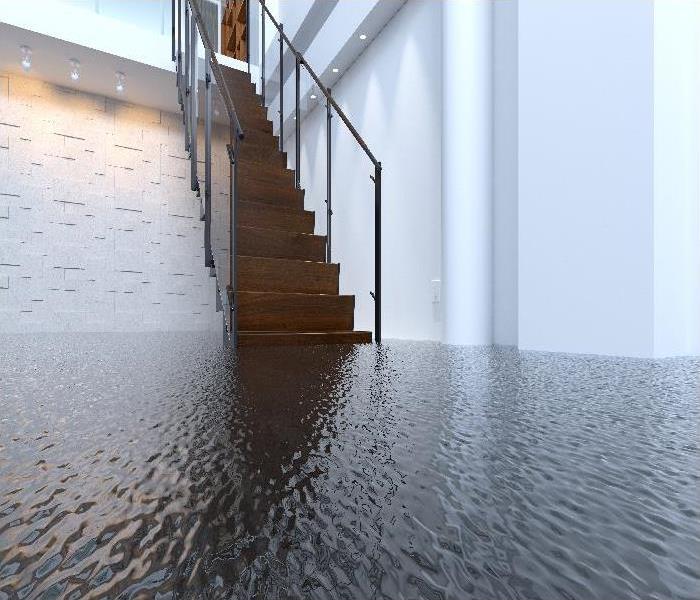 Rely on SERVPRO of Wayne to help plan for a successful recovery for your business from storm-related flood damage.
Rely on SERVPRO of Wayne to help plan for a successful recovery for your business from storm-related flood damage.
Straight Talk About Expectations Guides Both You and SERVPRO to Choose Recommended Interventions in the Aftermath of Flood Damage in West Milford
There is no shame when one business reaches out to another for help if your West Milford office building suffers from flooding during severe seasonal storms. Savvy business owners take a long view and leverage the experience and knowledge base of a reputable flood and storm damage recovery company long before extreme weather strikes. The key is to find a company that can deliver both pre-planning to minimize the effects of inevitable storm flooding and a rapid response in the aftermath of relentless wind and torrential rain.
Is It a Good Idea to Select a Flood Damage Restoration Partner Before a Water Loss Occurs?
The urgency you feel to run your business well might not include planning for the potential of emergency flood damage striking your West Milford commercial building. We suggest that you should. Every summer and fall, our region can find itself in the path of hurricanes or tropical storms, coming up the Atlantic coast or overland. It is likely that you might face a flooding disaster at some point, so determining which company to call in advance of the crisis is a wise business decision. You can take the opportunity to discuss how you might remain open, at least in a limited capacity during any potential flood damage recovery project.
If Many Residences and Businesses Are Flooded, Is It Better to Hire a Local Company or Go with the First Available Estimator?
When a wide swath of properties is several feet underwater in the community, do not be surprised to find itinerant flood damage companies knocking at your door. Resist the temptation to accept the promises of the first salesperson eager to provide you with an estimate. The SERVPRO team offers all the advantages of a local disaster restoration company to you, your employees, and your customers:
• A physical presence, with fully stocked service vehicles ready to roll
• Local licensure and certification that can be verified
• The ability for you to seek references you can trust from friends, family members, business associates, and community organizations and chances to view completed work
• The opportunity to contact in person, by phone, or electronic means the management or owners if you have concerns or inquiries
• The assurance that you can connect with us 24/7 today and into the future, and expect and receive a prompt response
Can a Local Company Manage My Specific Business Needs When So Many Ask for Flood Damage Assistance?
Although we are proud to be a member of our community, we maintain close ties with a national network of affiliated restoration companies that can help scale up our response when the need is great. We have access to additional crews trained as ours in the Institute of Inspection Cleaning and Restoration Certification (IICRC) standards, and a vast inventory of flood damage response equipment. If you want to streamline further our response to your business’s flood damage woes, consider a proactive approach -- work with us to develop an Emergency READY Profile and Plan (ERP).
Can Creating an ERP Help Me Continue to Operate a Portion of My Business During Flood Damage Cleanup?
Flood damage interventions can be disruptive to the day to day operations of your business center. Taking the opportunity to have our management learn about your physical plant and method of doing business allows us to customize a flood damage restoration plan in collaboration with you and perhaps your trusted employees. The process is straightforward:
• Call us to set up an appointment for a no-obligation assessment of your physical property
• Allow our experienced project manager to tour your business center
• Share all pertinent information with our manager, including any insights on how any previous flooding incidents affected your space
• Discuss how you imagine you could maintain a presence for your customers during flood damage restoration -- and listen to and implement our suggestions on how you could achieve that goal
• Use our mobile app to add details including an agreement to use us as your restoration company to the emerging ERP
• Meet with our manager to learn the specifics of how we anticipate responding to a flooding or other disaster and share that information with your staff
Once the ERP is in a concise, digital form, you or your designees can alert us by phone or mobile device 24 hours a day, seven days a week, that you require assistance with storm-related flood damage. Our crews can hit the ground running when responding to your job, aided by our proactive partnership.
Rely on SERVPRO of Wayne to help plan for a successful recovery for your business from storm-related flood damage. Join together with our expert team before, during, and after the storm by calling us 24/7 at (973) 546-4977.
How Do I Get the Smoke Odor Out of My Pompton Lakes Restaurant?
6/8/2020 (Permalink)
 Restaurant fires can shudder your business. SERVPRO is equipped to restore your restaurant. Call us today!
Restaurant fires can shudder your business. SERVPRO is equipped to restore your restaurant. Call us today!
SERVPRO Uses Proper Technique and Products to Remove Odors
The biggest issue following most fires in Pompton Lakes is that of odor. Often, even if firefighters or workers quickly put out the fire, a smell can remain indefinitely until adequately addressed. It is essential to understand what causes the malodor and how to remove it.
It Was Only a Kitchen Fire, Why Does it Smell So Bad?
Protein Fires Create Pungent Odors
When dealing with fire restoration in your Pompton Lakes restaurant, it is crucial to understand that there are different types of residues. Unfortunately, protein fires caused by burning fish or meat, cause a practically invisible residue but a strong odor. Even if the fire only occurred in the kitchen, your entire restaurant may smell after a protein fire.
What Are Some Other Factors that May Contribute to the Smell and Amount of Residue?
- Air pressure: Hot air from the fire expands, allowing the smoke to reach every nook and restaurant's cranny.
- Impingement: Hot air can move at a higher velocity, causing turbulence that splatters on surfaces like walls, making residues more challenging to remove.
- Amount of Moisture: If the sprinkler system activated or there was moisture in the air, condensation may set the residues into kitchen surfaces, making them harder to remove.
How Do Technicians Tackle the Odor?
- Surfaces throughout the restaurant must be thoroughly cleaned with grease-removing solvent to remove the odor-causing residue.
- Technicians may employ air purification equipment such as an oxidizer to clean the air.
- Technicians often use fogging equipment to recreate a smoke-like substance that attacks smoke molecules and either neutralizes or absorbs them for cleaning purposes.
For assistance after a fire, contact SERVPRO of Wayne anytime, day or night, at (973) 546-4977. We make it "Like it never even happened."
More about Pompton Lakes.
What Tools Remove Water from a Wayne Grocery Store Stock Area?
5/5/2020 (Permalink)
 Let SERVPRO help your Wayne grocery store when you have water damage.
Let SERVPRO help your Wayne grocery store when you have water damage.
Our SERVPRO Professionals Understand How Finite the Timeline is When Your Supplies Are at Risk of Water Damage, and We Can Help with Premier Extractor Tools and Drying Equipment.
With thousands of customers entering the doors of your grocery store each week, keeping your facility in top form becomes an increasingly harder and harder thing to do. When pipes burst or fire suppression systems become damaged, water damage effects can quickly spread through the immediate stock area of your store.
How Do I Remove Standing Water Immediately?
Standing water removal for your Wayne store involves multiple tools in our SERVPRO arsenal, as each of these situations can vary regarding severity, location, and affected contents or materials. Removing pooling water in the stock area is a vital effort that must begin immediately to help protect your investments. This effort begins with:
- Submersible Pumps – These are a staple of extraction work when the surface water to get removed is deeper than two inches. These pumps get entirely submerged in the water and can continually remove liquid until it gets to a more manageable depth.
- Wet Vacuums – Wet vacuums are the extractor of choice for lesser standing water concerns. Even an inch or two of standing water can still destroy your stock and supplies without immediate action, so the deployment of wet vacuums is essential.
- Squeegee Wands – Your stock area has concrete floors, with much of the non-perishable foods sitting up on moveable skids to make later restocking of goods faster. Squeegee wands help to remove any lingering surface water and limit slips and fall hazards.
Is It Possible to Protect the Stock Before Water Damage Occurs?
If caught early enough, our technicians and your staff can work to relocate potentially damaged goods to a safer area in the building. In some situations, this relocation can be all these items need to stay safe during restoration.
Our SERVPRO of Wayne team can help your store recover from unexpected water losses. Give us a call at (973) 546-4977.
To find out more about Wayne, click here.
Your Best Guide to Commercial Flood Damage Remediation Success in Wayne
1/26/2020 (Permalink)
 Flooding can quickly cause a mold infestation in your university setting. Contact SERVPRO to assess the situation and remediate the damage.
Flooding can quickly cause a mold infestation in your university setting. Contact SERVPRO to assess the situation and remediate the damage.
Steps for Managing Commercial Flood Damage in a Wayne University
When flooding happens in a university, taking the right actions when addressing the damage is vital for fast recovery. When the appropriate maintenance personnel and management learn about the incident, they should contact flood restoration experts.
The direct repercussion of commercial flood damage in a Wayne university is the destruction of the structures and the contents of affected buildings. As a result, the university must spend money on repairing or replacing ruined building materials and items. Apart from financial costs, affected buildings can be unsafe. Therefore, it may be necessary to suspend some classes or school functions.
Secondary destruction, like mold growth, may cause health effects to students and the faculty. Floodwaters may bring different debris into the institution of higher learning, including silt, mud, and sewage that not only look unsightly but could also cause unpleasant smells. The water and debris can also create trip, slip, and fall hazards in the institution.
The destruction of both paper and electronic records is another consequence of floodwater intrusion in a university. It can affect vital documents like academic transcripts and admission records. Our SERVPRO team can respond to the flood damage in your university promptly to prevent secondary destruction.
We can assess the facility to determine and address other risks resulting from the flooding incident like electrical hazards, injury risks from falling tiles, ceilings, or other objects, and dangers from ruined materials containing asbestos. Our crew can also determine the extent of the flood damage by inspecting the affected buildings thoroughly. Proper inspection is essential in cleanup and repair work because it helps restorers to trace ruined items and maintain appropriate records of the same.
Our technicians can begin the cleanup process quickly. To make the affected floors more accessible, we can move furniture and equipment to dry areas. We can place plastic sheets under the moved items to protect unaffected areas.
If there is sewage damage, we can perform immediate sewage removal. This is a delicate process because of the harmful microbes that could be present in it. Our team can clean affected hard and non-porous surfaces like walls and floors and then apply disinfectants to the surfaces to destroy bacteria, viruses, and fungi.
Our SERVPRO crew can also use drying equipment like air movers and low grain refrigerants to eliminate moisture from affected surfaces. We maintain a balanced drying system, which involves ensuring that the amount of moisture evaporating into the air does not exceed the amount of moisture that is being dehumidified from the air.
When flooding occurs in your learning institution, call SERVPRO of Wayne for efficient flood cleanup. Our emergency helpline is (973) 546-4977. We’re Faster To Any Size Disaster.
Click here to learn more about Wayne.
We Get You Back In Business In Wayne
12/2/2019 (Permalink)
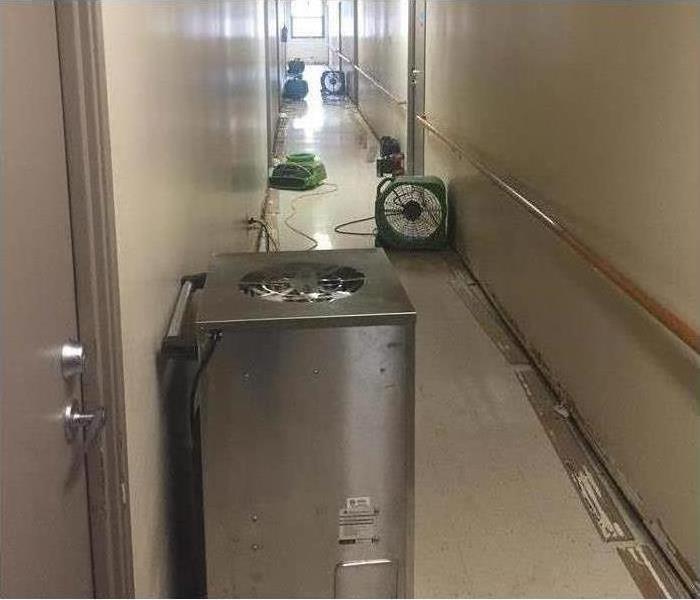 Our industry certified technicians are standing by with trucks already loaded with water damage restoration equipment to restore your business.
Our industry certified technicians are standing by with trucks already loaded with water damage restoration equipment to restore your business.
Two Ways We Speed Up the Process of Commercial Water Removal in a Drenched Wayne Office Suite
An office suite in Wayne often becomes like a second home for many of those working there – familiar, safe, and comfortable. Keeping your employees satisfied and productive requires that you maintain the environment. Unexpected emergencies can thwart this and ruin all your efforts. After the drinking fountain's feed line wiggles loose or the reservoir for the sprinkler system leaks, you want to assure your staff that you have the situation under control.
We serve businesses in and around Wayne with commercial water removal services and other restorative methods. We know the most effective methods to mitigate the effects of water intrusions, fire, storm activity, and microbial infestations. We want businesses in our area to succeed, and significantly reducing the amount of time need to recover after a disaster helps them when things might seem their worst.
There are two types of machines we use that help us extract residual moisture left after we use our pumps. These help get a structure completely dry so that the risk of additional damage decreases to normal expectations. Dehumidifiers and desiccant machines work to dry out the air by pulling water vapor out of it as the air passes through each machine.
SERVPRO's technicians want to get damp air to these machines before they can do their job. Our air movers and air blowers push air across surfaces to gradually pull moisture into the air. As they do this, moisture migrates through wet materials. Water damage moves from wet to dry, and also seeks equilibrium within the area. These same machines that we use to remove water from the interiors of damp walls, floors, and ceilings also guide the now-damp air into the nearest desiccant or dehumidifier.
Our air movers have different settings that range from a more gentle and slower speeds under 1000 cubic feet per minute (CFM), and some closer to the 3000 CFM range. These machines are so versatile, the specialists at SERVPRO use them to dry out the interiors of walls, underneath cabinets, and the thicknesses that make up your carpeted flooring. In many situations, these require venting or other measures to allow for saturated air to escape the area where we are working.
Venting can also help the moisture escape directly out of your home, bypassing any desiccant machines or air movers. Doing this requires that we build an enclosure just large enough to surround the materials we intend to dry. Drying chambers like this have other uses, as well, including protecting office furniture and expensive machines. When we perform water removal tasks, some of these include pulling out damaged items, and this can produce dust. Drying chambers can help keep dust away from sensitive equipment.
SERVPRO of Wayne's technicians use various machines and techniques to make water removal happen as fast as possible. We want to help you get your business and its environment normal again, “Like it never even happened.” Call (973) 546-4977 for experts near West Milford, Pompton Lakes, and Ringwood.
See more about Wayne.
Document Restoration
2/4/2019 (Permalink)
As a leader in the restoration industry, SERVPRO® knows timely mitigation is the key to reducing severity and recovering damaged items. Water– or smoke–damaged paper can rapidly deteriorate. Without proper handling, valuable files and irreplaceable documents could be lost forever. Let SERVPRO’s Document Restoration Team help you recover your damaged paper goods before it is too late.
SERVPRO’s technicians are trained to use the most advanced technology available for document recovery and drying; in fact, the Document Restoration Team uses the same technique the Library of Congress uses to dry water-damaged books.
Vacuum Freeze Drying?
Vacuum freeze drying is the most efficient and effective way to salvage water-damaged documents. The Document Restoration Team uses
sublimation—turning a solid directly into a vapor, skipping the liquid stage to avoid causing more damage to the documents. This process can recover even the most delicate items—from documents to photographs and x-rays, to entire business archives.
All employees of the Document Restoration Team are HIPAA Master certified and once your items arrive at the SERVPRO® facility, 24/7 video surveillance is guaranteed.
Digitizing
With the new age of technology, digitizing records and documents has become a standard practice in most industries. This eliminates the need to have massive file storage rooms and allows us to access records at the click of a button. If your file room was damaged by water or smoke and needs to be cleaned, dried or decontaminated, digitizing might be a good choice to eliminate the need to have hundreds or even thousands of documents and records in storage.
Gamma Irradiation
Gamma irradiation is a process used for cleaning/disinfecting and decontaminating documents or other consumer goods.
In a CAT 3 situation (sewage or flood water), documents are not only deteriorating but are also infected with all types of bacteria. In most storm situations, you are dealing with CAT 3 water; therefore, most of the affected documents you encounter will be contaminated.
If this is the case, decontamination is always a must. In living cells, these disruptions result in damage to the DNA and other cellular structures. These photon induced changes at the molecular level cause the death of the organism or render the organism incapable of reproduction. The gamma process does not create residuals or impart radioactivity in processed products.
Certified Destruction
Unfortunately, many businesses and government agencies have to dispose of counterfeit, faulty, expired or contaminated materials. All entities need to be certified that their products and materials are destroyed. The guarantee of certified destruction is to protect one’s liabilities, brand image or proprietary information. We guarantee certified destruction to give you peace of mind that your documents are disposed of properly.
Contact us at 973-546-4977 if you have a service need or click here to visit our website to learn more about SERVPRO of Wayne's System Services.
Like Us on Facebook or Follow us on Twitter or Instagram and follow the tips, tricks and advice we share with our community.
Commercial Winter Weather Guidance
12/6/2018 (Permalink)
Source: https://disastersafety.org
Among the biggest weather events of the winter are the recurring monster snowstorms that wallop the Northeast and wreak havoc on travel throughout the U.S. during a 6-week period from late January to early March. Frequent snowfalls are accompanied by persistent cold temperatures that prevent melting. When it is all done businesses throughout the region experience roof collapses, frozen pipes, and the logistical challenge of getting employees to work when neither roads nor transit systems can keep pace with the snow.
While these “snowpocalypse” storms receive the most attention, winter cold and storms pound many parts of the U.S. during the past year; the lessons learned from these heavy storms can help businesses elsewhere prepare for and respond to snow, ice, and freezing temperatures in 2018 and beyond. With this goal in mind, following is guidance on severe winter weather and business protection.
Use Social Media to Communicate Before, During, and After a Major Storm
Winter storms launch a “blizzard” of social media, as people across the Northeast post photos, videos, and personal anecdotes about the snow. While many of these posts help inject humor into a difficult and sometimes dangerous weather event, they also helped strangers isolated by the storm come together and commiserate. At least as important, social media serves as a way for emergency management officials to warn residents about approaching weather conditions (including how to prepare and what to do during and after a storm), and some businesses use it to stay connected with employees, customers and business partners. This allows them to communicate quickly, widely and accurately—providing such information as the opening status of the business, whether employees need to report to work, any delays in the provision of goods and services, and when updated operational information would be available. Importantly, while these same social media tools that employees use in their personal lives can be applied to post-disaster business communications at little or no cost, planning ahead is essential to finding the specific social media platforms that will work best.
Telecommuting Should Be Part of Every Winter Weather Business Continuity Plan
Due to the rapid and heavy snow accumulation last winter in the Northeast, a number of states and localities issued widespread travel bans. Even after the bans were lifted, many roads remained impassable, and Boston’s public transit system was incapable of transporting its usual 1.2 million daily riders. For many employers, telecommuting became a vital option that allowed them to avoid a shutdown while keeping employees off of clogged or dangerous roads and stalled mass transit systems. However, for telework to be successful, employers need to plan ahead by identifying telecommuting strategies, documenting a telecommuting policy, putting in place an I/T structure to support the program, and testing the system prior to a blizzard or other emergency.
Keep the Power On and the Business Running with Generators
Snow and ice have the potential to weigh down tree limbs and pull down power lines, causing widespread and long-lasting power outages. Although power outages associated with winter storms are not as severe as anticipated (due to the powdery light snow that falls in most areas), that is not always the case. In fact, one of the worst storms in this regard was the unprecedented 2011 Halloween nor’easter which hit when many trees were still in leaf, resulting in tree and branch collapses that caused an estimated 3.2 million commercial and residential power outages, some lasting long after the snow had been removed or melted. A commercial generator can help businesses minimize disruption when faced with such a situation, but only if one is purchased, installed, and maintained prior to the time of need. It is also critical to have effective generator safety practices in place to minimize risks to people and property, including fire, damage to electrical equipment, and, most tragically, carbon monoxide poisoning. It is also important to have contracts in place with reliable vendors to ensure delivery of generator fuel and other critical supplies.
Snow Removal is Essential to Keep a Clear Path to Your Business
After snowfall, it is important to clear parking lots, driveways and sidewalks to provide safe access for employees, customers and suppliers. In some jurisdictions, there are legal requirements for snow removal; but even if that is not the case, promptly removing snow and minimizing icy surfaces is important for reducing the likelihood of slips and falls, and shows customers you are open for business. Smaller snow amounts can be handled by maintenance staff (assuming the right snow removal equipment is on hand), but large accumulations generally require professional snow removal contractors. These crews are in heavy demand after a storm, so it is critical to have outside service contracts in place prior to the first snowfall of the season. When selecting a contractor, it is important to make sure the people who remove your snow/ice will show up as anticipated, do a thorough job, and work within previously negotiated price guidelines.
- Make sure the contract covers all of your needs (e.g., parking lots, driveways, walkways, roofs).
- Look for an established, licensed and bonded professional.
- Check references.
- Ask to see the contractor’s certificates of insurance. Make sure coverage for liability and workers’ compensation insurance is current.
Beyond the big headline blizzards, severe winter weather can occur in many parts of the U.S. from late fall until early spring. By the time these storms are broadcast by local forecasters, it may be too late to put in place the measures needed to remove heavy snow and ice, protect roof systems and water pipes, and keep employees and operations productive. With advance planning, businesses can minimize “snowpocalypse” disruption as they wait for warmer weather to arrive.
Contact us at 973-546-4977 if you have a service need or click here to visit our website to learn more about SERVPRO of Wayne's System Services.
Like Us on Facebook or Follow us on Twitter, Google+, or Instagram and follow the tips, tricks and advice we share with our community.
Last-Minute Winter Weather Checklist
10/25/2018 (Permalink)
Source: https://disastersafety.org
Prepare for a Power Outage
Heavy snow and high winds are a recipe for widespread power outages. It’s important to prepare a plan now before a possible outage.
Prevent Roof Collapse
If heavy snow begins to accumulate on your roof, remove the snow with a snow rake and a long extension arm that will allow you to remove the snow while standing safely on the ground. Find additional guidance at disastersafety.org/freezing_weather/prevent-roof-collapse.
Stay Safe and Warm
Inspect your source of heat for any damage which can cause a fire and result in costly property damage. Also, remove combustible items placed near a heat source. For more information, check IBHS’ guide on alternative heating at disastersafety.org/wp-content/uploads/alternative-heating.pdf.
Prevent Frozen Pipes
Prevent costly water damage caused by frozen pipes by:
- providing a reliable back-up power source to ensure continuous power to the building;
- insulating all attic penetrations;
- ensuring proper seals on all doors and windows; and
- sealing all cracks and openings in exterior walls.
Additional guidance is available at disastersafety.org/wp-content/uploads/Freezing-Bursting-Pipes_IBHS.pdf.
Know Your Winter Weather Alerts
When severe winter weather is on its way, it’s important you know and understand what each alert means so you can respond accordingly. Learn more about alerts at disastersafety.org/freezing_weather/finding-meaning-in-winter-weather-forecasts.
Contact us at 973-546-4977 if you have a service need or click here to visit our website to learn more about SERVPRO of Wayne's System Services.
Like Us on Facebook or Follow us on Twitter, Google+, or Instagram and follow the tips, tricks and advice we share with our community.
Reduce Flood Damage to Businesses
10/7/2018 (Permalink)
Source: https://disastersafety.org
Your plan for disaster preparedness should include flood information and outline how to prepare for floods. Read on for information about floods and flood safety tips, and how to make them part of your emergency preparedness plan as you prepare for a flood.
Types Of Flooding
Topography and weather conditions play a prominent role in the impact different types of flooding have on specific locales. The following are some examples of specific types of flooding.
- Rising water may be the greatest risk to inland areas away from a river bed after a heavy snow pack begins to melt or after heavy rainfall.
- Moving water is a serious risk in areas near rivers or in coastal storm surge areas because it creates significantly larger lateral forces on a building.
- Overtopping, breaching or opening of dams, levees, and other flood control mechanisms, which are designed to divert the flow of water to provide protection, can lead to flood damage that may be more significant than if the levees were never installed. The Mississippi and Missouri River floods of 2011 included breaches of levees, as well as controlled flooding by the opening of various flood gates on levees. The result was thousands of acres of farmland, crops, livestock and fish farms being destroyed to protect urban areas.
- Flash flooding can occur in every region as a result of slow-moving thunderstorms or excessive rainfall from any storm system.
- Large, slow-moving tropical storms can dump excessive amounts of rain on coastal locations and then move inland to continue the devastation, resulting in widespread flood damage.
Floods can occur anywhere, often with little or no warning, and with devastating consequences. Protecting the bottom line in order to remain open, or to re-open quickly after a flood disaster, requires taking steps now to prevent or reduce flood damage should your business be in the path of rising water. Below is a brief overview of issues that small businesses must address to reduce the likelihood of flood damage and to prepare financially and operationally should a flood occur. Many of the topics covered here involve complex issues that are best addressed by hydrological, engineering, regulatory or insurance experts; the goal here is simply to outline the basics in order to help business owners understand why they need to mitigate against flood risk and some of the challenges they may face.
Tropical Storm Allison (2001): A Case Study in Flooding
Often, businesses and homeowners let down their guard when a tropical weather system does not result in hurricane-force winds. Tropical Storm Allison is a good example of how rains associated with a tropical system can be equally devastating. The storm dumped approximately 32 trillion gallons of rain (enough to meet U.S. water needs for an entire year), according to the Tropical Storm Allison Recovery Project. This included 28 inches of rainfall during a 12-hour period just northeast of downtown Houston, and rainfall amounts ranging from 10, 20 and 30 inches in locations throughout the Southeast—earning Allison the infamous distinction as the costliest tropical storm in U.S. history.
Understanding Your Flood Hazard
There are several flood principles that should be considered to determine your facility’s exposure to flood waters and the type of protection to be deployed:
- Duration: It is important to know if flood waters are expected to recede quickly or may be trapped due to the slope of the land. The longer a facility is exposed to flood waters, the greater potential for flood-proofing failures due to a breach in the protection.
- Depth: Flood waters greater than 3 feet create hydrostatic pressure on walls that can cause cracks in masonry and greatly increase the potential of collapse to unreinforced masonry. When estimating the potential depth of flood waters, it is always best to include a safety factor to account for inaccuracies in the estimate.
- Velocity: As flood water velocity increases, so does the pressure exerted on flood protection. River flooding can be very fast moving water at first and then may settle down. Coastal locations may be exposed to wave action from storm surge.
- Water Condition: Many times flood waters are dirty, brackish or contaminated with biological and chemical materials including waste water, sewage, pesticides, industrial waste, toxic and non-toxic chemicals, or oils. Debris that is churning in the water can impact buildings and flood protection systems, create breaches in the protection and cause extensive damage.
Location, Location, Location
Proximity to water is the number 1 risk factor for flooding, but property owners should not assume being out of the floodplain will help you entirely avoid the possibility of flooding. It is always a best practice to locate your property as far away from bodies of water as possible. Flood maps available from the National Flood Insurance Program (NFIP) identify 100-year and 500-year flood zones throughout the United States. The flood zones also delineate participation in the NFIP, as well as permitting and other requirements that communities adopt in order to meet NFIP standards and qualify their citizens for lower flood insurance rates. By definition, the 100-year and 500-year flood zones mean there is a 1 (.20) percent chance of flooding annually in an area based on topography and historical data; it does not mean that flooding will occur only once in a century (or 500 years). There also are other important points to consider.
- Floods can and very often do occur outside the 100-year flood zone. In fact, approximately 25 percent of all flood damages occur in relatively low risk zones commonly described as being “outside the mapped flood zone.”
- Specific boundaries on some flood maps may be arbitrary or include inaccuracies. For example, a property lying just outside the 100-year flood zone is almost equally likely to be flooded as one just within.
- Obstructions or landfill can change the topography, storm-water drainage patterns, and flow of water over natural floodplains. Although permits are required for flood zone fill (and must be based on engineering assessments demonstrating “no impact”), it is possible that non-permitted work has occurred near your property.
- Floods show no respect for the estimated probabilities. As Federal Emergency Management Agency (FEMA) Director Craig Fugate observed following a spate of natural disasters, “It just seemed like it was back-to-back and it came in waves. The term ‘100-year event’ really lost its meaning this year.”
The Importance of Elevation
When it comes to flooding, there really is no better solution than adequate elevation, aside from choosing a location well outside of a 500-year flood plain. If such a location is not possible, the best way to increase the safety margin against flood damage is to raise the elevation of your building above the 500-year flood elevation. Flood-proofing your building is another option to reduce damage. Through the NFIP, there is extensive regulation of floodplain development at the community level.
Permits are needed for a wide range of activities including construction of new buildings, additions to existing buildings, and substantial improvement to the interior of existing buildings that are within the most hazardous flood zones. Part of the permitting process involves whether your building site is higher than the base flood elevation (BFE), which is the elevation at which your property has a 1 percent chance of flooding annually, as indicated on the NFIP flood maps. Major storms and flash floods can cause waters to rise higher than the BFE—therefore, it is always a good investment to build in a safety factor several feet above the BFE. This safety zone is called “freeboarding.”
For example, IBHS’s FORTIFIED for Safer Business™ Standards, a package of enhanced voluntary construction standards that greatly increase a new light commercial building’s durability and resilience to natural hazards, requires FORTIFIED buildings to be at least 3 feet above the BFE or above the 500-year flood elevation. There are also ways to retrofit your existing building so that it meets or exceeds BFEs. While only a structural engineer/design professional can determine what is right for your property, the options include raising foundation onto pilings or columns or adding landfill, as long as “no impact” floodplain requirements are met.
- When elevating a building so that the walking surface of the lowest floor is at the minimum elevation, areas under the BFE can be used only for parking and limited storage—under-floor bathrooms, utilities, and ductwork are not allowed.
- Equipment, utility connections and all interior utility systems including ductwork must be elevated above the BFE. In addition, fuel and propane tanks must be properly anchored, since they can become buoyant even in shallow water.
What is “Dry Flood-Proofing”?
Sealing a building so that water will not enter is called “dry flood-proofing” or “flood-proofing.” Flood-proofing protects your building by coating the exterior with a membrane to prevent flood waters from entering. NFIP regulations allow flood-proofing as an alternative to elevation above the BFE for newly constructed or substantially improved non-residential structures only—new and improved homes must be elevated above the BFE to meet NFIP requirements. It is important to determine whether dry flood-proofing will provide the protections your property needs before choosing this option. This also applies if your business is located outside the 100-year flood zone, but you want to invest in additional flood protection. Dry flood-proofing is a complex procedure that should be done by professional experts. If done incorrectly, it may not protect your property and can lead to decay, mold, or termite damage:
- As a general matter, dry flood-proofing is best suited to areas with clay soils where floods are short in duration and less than 3 feet deep.
- Buildings in poor structural condition should not be dry flood-proofed, as the exterior walls will be under extreme pressure during a flood.
There are a variety of dry flood-proofing measures; a professional can help to determine whether any of them are right for your situation:
- Applying a waterproof coating or membrane to exterior walls
- Sealing all wall penetrations including where utilities enter the building
- Installing waterproof shields over all openings, including windows and doors
- Anchoring the building to resist flotation
- Strengthening walls to withstand flood water pressures and flood debris
The Vulnerable Basement
Even above the BFE or outside the floodplain, basements are prone to floods because water may flow down into them. They also may have an increased hydrostatic pressure exerted upon them when the surrounding ground is saturated. Recognizing that elevation is the best form of mitigation, there are a number of additional measures business owners can take to reduce the likelihood and scope of basement flood damage.
- Thoroughly inspect your basement and the surrounding property for evidence of water entry and sources of water flow and leakage.
- Correct potential problems—for example, extend and redirect downspouts, re-grade sloping landscape, and caulk any interior wall cracks.
- Basement walls should be designed to resist hydrostatic pressure.
- Use flood-resistant materials where possible, including floor coverings, wall coverings, and wall insulation. Most flood-resistant materials can withstand direct contact with water for at least 72 hours without being significantly damaged.
- Do not store valuable equipment, documents, or inventory in any crawlspace or basement where flooding is possible.
The “Green” Factor
In addition, there are steps you can take now to reduce health and environmental damage should a flood occur.
- Anchor fuel and propane tanks to prevent them from being swept away. When they break away, the contents may leak, creating fire, explosion and pollution risks that can adversely affect health and the environment.
- Install sewer backflow valves to block drain pipes from sewage back-up, which can occur if there is flooding in your area.
- If you are supplied by well water, protect your well from contamination. A licensed well drilling contractor can inspect your well and suggest improvements.
Financial and Operational Protections
The NFIP makes flood insurance available to commercial owners and renters. As is the case with residential property, costs vary depending on how much insurance is purchased, what it covers, and the property’s flood risk. NFIP coverage limits are up to $500,000 for a commercial building, and up to $500,000 to protect its contents. Insurance coverage also may be available from private insurance companies, depending on your business’s location, building and business characteristics, and property value.
The best way to learn more about flood insurance benefits, costs, and options is to contact your insurance agent. Finally, take steps now so you can quickly resume operations should a flood or other hazard damage your property. Although flood insurance may cover losses to your structure and contents, many businesses that are severely damaged never fully recover financially due to the loss of management focus, employees, and market share. IBHS’ Open for Business® planning tool helps small- and mid-sized businesses resume their critical business operations and work processes and deliver the goods and services expected by customers or clients–consider it a vital part of your flood preparation planning and practice.
Contact us at 973-546-4977 if you have a service need or click here to visit our website to learn more about SERVPRO of Wayne's System Services.
Like Us on Facebook or Follow us on Twitter, Google+, or Instagram and follow the tips, tricks and advice we share with our community.
Is your workplace prepared in the event of a fire?
10/7/2018 (Permalink)
Source: http://www.huffinsurance.com
Author: Jerry Nicklow
What would you say is the biggest cause of workplace fires? It's not equipment failure. It's not electrical faults. It's not storms or natural disasters. It's people and carelessness.
Every year, in more than 70,000 workplace fires across North America, an average 200 people die, thousands are injured and many firms are either put out of business or severely disrupted.
October is Fire Protection Week in the US and Canada, so now is a good time to review and remind employees of safety rules. A few simple steps will help identify and reduce risks. Things like:
- Assessing your buildings for risks -- I'd make that a visual inspection tour
- Reducing clutter and keeping escape routes clear
- Storing flammable chemicals under lock and key
- Locating heat-producing equipment, even coffee-makers, away from flammable material
- Checking building security to prevent possible arson fires
- Enforcing no-smoking or designated area rules
- Checking fire extinguisher service and replacement dates
- Ensuring employees know how to operate extinguishers
- Enforcing rules for the use of spark - and fire-producing equipment
- Conducting permitted, controlled burning/fires a safe distance from buildings
- Checking operation of fire and smoke alarms
It's even more important that employees know what to do if fire does break out. Even if it's not mandatory, you should have a written emergency action plan that includes details of evacuation routes, location of assembly points, procedures for raising the alarm and, if appropriate, a written list of individuals and their responsibilities.
As much as everyone loathes them, evacuations should be practiced at least once a year. It's a good idea to alert employees of an intention to have a practice drill but not to tell them exactly when it will happen.
Here are a couple of documents you may find useful in drawing up or reviewing your plans:http://tinyurl.com/fire-evac-1 and http://tinyurl.com/fire-evac-2
And if you'd like to know more about Fire Safety Week or get other information about fire safety, visit the National Fire Protection Association, a US-based global organization, at www.nfpa.org
Finally, please make sure you have adequate insurance in place, not just against property damage and liability arising from fires but also coverage to protect you against income losses arising from business disruption.
Contact us at 973-546-4977 if you have a service need or click here to visit our website to learn more about SERVPRO of Wayne's System Services.
Like Us on Facebook or Follow us on Twitter, Google+, or Instagram and follow the tips, tricks and advice we share with our community.
Fire Safety - The Escape Plan
8/18/2018 (Permalink)
Source: http://www.huffinsurance.com/blog/entryid/3927/fire-safety-the-escape-plan
Author: Jerry Nicklow
Whether it was at school, or at work in an office building, we have all been through fire drills numerous times during our lifetimes. But let me ask you this. Have you ever had a fire drill at your home?
I bet if I put this poll out there to the public, the “NO” answer would win by a staggering majority. And at this point, I admit that I would be in the majority with my answer. But after reading up on this subject, that will change in the not so distant future.
The first few steps of the plan involves preparation.
- Make sure that you have smoke alarms in the right areas of your home and that testing them to make sure they are functional. The old adage of having one alarm on each floor does not apply anymore. You should have one alarm in each bedroom, one outside of each bedroom, and at least one on the other floors in the home. And it is best to have interconnected alarms throughout the home, so when one alarm is triggered, all of the alarms sound at once.
- Make sure your house number is CLEARLY visible from the road. You do not want to delay the fire department from getting to your home.
- Make sure everyone knows the emergency numbers to call, even small children.
- Then you need to pull your household members together and make a plan. Start by walking through the home and locating ALL possible escape routes. IF you have younger children, you may want to consider drawing up a floor map with the exits clearly mapped (we have all seen these types of maps in hotels before).
- Make sure each room above ground level has an escape ladder and that everyone is trained and knows how to use the ladders. During a fire, a window might just be the only way out, and you do not want to learn on the fly during a fire.
- Designate an outside meeting place for to gather after evacuating the house. And make sure you mark the meeting place on your escape plan. This is the best way to account for all household members during the hectic emergency event.
- If there are infants, small children, or adults with mobility problems, make sure the plan designate who is responsible for getting them to safety, with backups designated. The last thing you want to happen is to assume someone else is getting them and then get outside to realize that no one did.
- Go over your plan on a regular basis to make sure everyone understands their responsibilities and know the best way out should a fire occur.
Putting your Plan to the test:
- Practice your plan at least twice per year. And make the drill as realistic as possible, including having a drill in the middle of the night occasionally. This is important so you can see if there are household members who will not be awakened by the smoke alarms. This needs to be noted so responsibility can be assigned to get them up and out should there be a fire in the middle of the night.
- In a fire, you will not always be able to just walk out of the front or back doors. So practice exiting the house from the windows. And if you have more than on floor, practice using the escape ladders from the second floor windows.
- Fires happen and the can be devastating, so having a plan and knowing what to do beforehand and make a difference between making it out safely and not making it out. Sadly, no plan can ever guarantee that you will make it out safely, but having plan and practicing the plan, will increase your odds of doing so.
Contact us at 973-546-4977 if you have a service need or click here to visit our website to learn more about SERVPRO of Wayne's System Services.
Like Us on Facebook or Follow us on Twitter, Google+, or Instagram and follow the tips, tricks and advice we share with our community.
Is your workplace prepared in the event of a fire?
7/31/2018 (Permalink)
Source: http://www.huffinsurance.com/blog/entryid/11552/fire-safety-and-preparation-for-the-workplace
Author: Jerry Nicklow
What would you say is the biggest cause of workplace fires? It's not equipment failure. It's not electrical faults. It's not storms or natural disasters. It's people and carelessness.
Every year, in more than 70,000 workplace fires across North America, an average 200 people die, thousands are injured and many firms are either put out of business or severely disrupted.
Now is a good time to review and remind employees of safety rules. A few simple steps will help identify and reduce risks. Things like:
- Assessing your buildings for risks -- I'd make that a visual inspection tour
- Reducing clutter and keeping escape routes clear
- Storing flammable chemicals under lock and key
- Locating heat-producing equipment, even coffee-makers, away from flammable material
- Checking building security to prevent possible arson fires
- Enforcing no-smoking or designated area rules
- Checking fire extinguisher service and replacement dates
- Ensuring employees know how to operate extinguishers
- Enforcing rules for the use of spark - and fire-producing equipment
- Conducting permitted, controlled burning/fires a safe distance from buildings
- Checking operation of fire and smoke alarms
It's even more important that employees know what to do if fire does break out. Even if it's not mandatory, you should have a written emergency action plan that includes details of evacuation routes, location of assembly points, procedures for raising the alarm and, if appropriate, a written list of individuals and their responsibilities.
As much as everyone loathes them, evacuations should be practiced at least once a year. It's a good idea to alert employees of an intention to have a practice drill but not to tell them exactly when it will happen.
Here are a couple of documents you may find useful in drawing up or reviewing your plans:http://tinyurl.com/fire-evac-1 and http://tinyurl.com/fire-evac-2
And if you'd like to know more about Fire Safety Week or get other information about fire safety, visit the National Fire Protection Association, a US-based global organization, at www.nfpa.org
Finally, please make sure you have adequate insurance in place, not just against property damage and liability arising from fires but also coverage to protect you against income losses arising from business disruption.
Contact us at 973-546-4977 if you have a service need or click here to visit our website to learn more about SERVPRO of Wayne's System Services.
Like Us on Facebook or Follow us on Twitter, Google+, or Instagram and follow the tips, tricks and advice we share with our community.
SERVPRO Emergency Ready Profile - It Works!
7/4/2018 (Permalink)
The SERVPRO Emergency Ready Profile has been adopted by many of our clients, and in some cases, has shortened the response time of our services, saving our clients downtime and secondary damage costs.
It's simple and easy to implement, securely placing critical business information in a cloud location available to our client and SERVPRO. Information that is available when access to your business is not.
When you consider you business continuity plan, consider implementing the SERVPRO ERP.
The SERVPRO Emergency READY Profile
SERVPRO Industries continues to make improvements to its already successful Emergency READY Profile.
The SERVPRO Emergency READY Profile is a startup approach that provides the critical information needed to begin mitigation and recovery services. It is designed to serve as a quick reference of important building and contact information. By working with SERVPRO’s Emergency READY Profile, your business can receive the benefit of over 40 years of experience in reducing the impact of any natural or man-made disaster. SERVPRO is a leader in water and fire damage response and can help you quickly get your property back in working order.
The SERVPRO Emergency READY Profile Advantage:
- A no cost assessment of your facility. – This means there is no need to allocate funds, giving you a great value at no cost.
- A concise Profile Document that contains only the critical information needed in the event of an emergency. – It will only take a little time to complete and will not take you away from current projects. But it will save a lot of time if ever needed.
- A guide to help you get back into your building following a disaster. – This can help minimize the amount of time your business is inactive by having an immediate plan of action.
- Establishes SERVPRO of Wayne as your disaster mitigation and restoration provider. – You have a provider that is recognized as an industry leader and is close by.
- Identification of the line of command for authorizing work to begin. – This saves time so we can begin the work of mitigating the damage which can save you time and money.
- Provides facility details such as shut-off valve locations, priority areas and priority contact information. – Having a quick reference of what to do, how to do it and who to call provides solutions in advance of an emergency so that during the emergency you are “Ready for whatever happens.”
The Best Way to Reduce Business Interruption Following a Disaster is to Plan For it NOW.
As many as 50% of businesses close down following a disaster, according to the latest research. Of the businesses that survive, the overwhelming majority of them had a preparedness plan in place. Pre-planning can serve as an insurance policy aimed at peace of mind. And knowing you are “Ready for whatever happens” speaks trust to your clients and employees that in the event your business is affected by a disaster, they don’t necessarily have to be.
By developing a SERVPRO Emergency READY Profile for your business, you help to minimize business interruption by having an immediate plan of action. Knowing what to do, who to call and what to expect in advance is helpful in receiving timely mitigation and can help minimize the effects water and fire damage can have on your business.
Are You Ready?
Preparation is a key component for making it through any size disaster, whether it’s a small water leak, a large fire or an area flood. The best time for planning for such events is not when the event happens, but well before it happens. No one ever plans on a disaster, but you can plan for it. Now is the time to ask yourself, are you ready for whatever happens?
Call Today to Get Started!
Contact us at 973-546-4977 if you have a service need or click here to visit our website to learn more about SERVPRO of Wayne's System Services.
Like Us on Facebook or Follow us on Twitter, Google+, or Instagram and follow the tips, tricks and advice we share with our community.
WHEN DISASTER STRIKES
10/31/2017 (Permalink)
When a storm or disaster strikes, SERVPRO’s
Disaster Recovery Team® is poised and “Ready for whatever happens.” With a network of more
than 1,700 Franchises, the SERVPRO® System strives to be faster to any size disaster.
Strategically located throughout the United States, SERVPRO’s Disaster Recovery Team® is trained and equipped to handle the largest storms
and highest flood waters. Providing experience, manpower, equipment, and other resources, the Disaster Recovery Team® assists local SERVPRO® Franchises. SERVPRO’s Disaster Recovery Team® has responded to hundreds of disaster events. In the aftermath of a disaster, there is only one objective: to help you make it
“Like it never even happened.”
2016 East Tennessee Wildfires: One of the largest in the history of Tennessee, the Great Smoky Mountains wildfires burned more than 17,000 acres and about 2,500 structures in November 2016. The 12 crews that were dispatched worked a total of 78 jobs, where they mitigated over $1 million in damages.
2016 Hurricane Matthew: Following the East Coast from Florida up to North Carolina, this hurricane caused major flooding, primarily as rivers rose in Eastern North Carolina. SERVPRO® had 169 crews dispatched. These crews took on more than 1,050 jobs and over $7.5 million in damages.
2016 Louisiana Flooding: Catastrophic flooding occurred in Southern Louisiana where rainfall measured 20 inches or more total, falling at a rate of more than 2-3 inches per hour in some places. This caused rivers and inland waterways to rise to record levels. The Disaster Recovery Team® responded to over 830 jobs with 185 crews.
2016 Houston, TX Flooding: In April, a nearly stationary mesoscale convective system developed over Houston, resulting in widespread rainfall rates of 2-4 inches per hour. This was a historic flooding event for Harris County, which saw a total of nearly 18 inches of accumulated rainfall. The Storm Team dispatched 81 crews to over 360 jobs, mitigating over $3 million in damages.
2015 Siberian Express: Record sub- zero temperatures caused major problems for a large portion of the country stretching from Florida to Maine. The Midwest also experienced record- breaking low temperatures, resulting in frozen pipes and ice dams causing major problems for residents. The Storm Team dispatched a total of 257 crews from 108 Franchises to assist local SERVPRO® Franchises completing nearly 2,000 jobs.
2014 Mid-Atlantic Flooding: Rainfall rates up to 2 inches per hour caused major flash flooding stretching from Northeast Ohio all the way to Portland, Maine. Eastern Michigan and Baltimore, Maryland, were also impacted, creating over 1,381 jobs for the Storm Team to produce. A total of 82 SERVPRO® Franchises and 173 crews mitigated over $4.3 million in damages while assisting the local Franchises.
2014 Polar Vortex: Record low temperatures caused by a break in the North Pole’s polar vortex resulted in an WHEN DISASTER STRIKES unprecedented freezing event, spanning from east of the Rocky Mountains to as far south as central Florida, affecting all or part of 39 states and 70% of the SERVPRO® Franchise System.
2013 Colorado Floods: Heavy rainfall, with amounts up to 17 inches in some areas, resulted in widespread flooding in Fort Collins, Boulder, and surrounding Colorado mountain communities. The Disaster Recovery Team® responded with 109 crews from 48 Franchises to assist the local SERVPRO® Franchises in the emergency response.
2012 Hurricane Sandy: Affecting more than 20 states, Sandy left widespread damage and flooding from Florida stretching the entire eastern seaboard to Maine. The Disaster Recovery Team®
placed nearly 1,000 crews in affected areas, representing over 300 SERVPRO® Franchises from across the country. Teams traveled from as far as Arizona, California, Oregon, and Washington.
Contact us at 973-546-4977 if you have a service need or click here to visit our website to learn more about SERVPRO of Wayne's System Services.
Like Us on Facebook or Follow us on Twitter, Google+, or Instagram and follow the tips, tricks and advice we share with our community.
Proper Air Duct Cleaning in Businesses
10/6/2017 (Permalink)
What You Need to Know About Air Duct Cleaning
Air duct cleaning is a misnomer. In actuality, the entire HVAC system should be cleaned. Failure to clean all components of the system can result in recontamination of the entire system, thus minimizing the benefits of cleaning.
Just as you wouldn’t clean only half of your living room floor, you also would not want to clean only part of your HVAC system. NADCA recommends cleaning the entire HVAC system, including the following components:
- air ducts
- coils
- drain pan
- registers
- grills
- air plenum
- blower motor and assembly
- heat exchanger
- air filter
- air cleaner
There are two key components to HVAC cleaning: breaking contaminants loose, and collection of contaminants.
Breaking Contaminants Loose
Properly cleaning HVAC systems requires removing the sources of contamination. Source removal begins with the use of one or more agitation devices designed to loosen contaminants from the surfaces within the heating and air conditioning system. Examples of agitation devices include: brushes, air whips and compressed air nozzles or “skipper balls.” Agitation can also be achieved through hand-brushing or contact vacuuming.
Collection of Contaminants
During cleaning, the entire HVAC system is placed under continuous negative pressure (a vacuum) to prevent the spread of contaminants. Continuous negative pressure allows very fine particles to be removed from the system as they become airborne, ensuring that these particles are not released into the living space when the system is turned on after cleaning. This negative pressure also serves to extract the loosened contaminants, which are collected and removed from your home.
System Access
HVAC system cleaning is not a complex process, but each job is unique. Where possible, access to duct interiors should be made through existing openings such as supply diffusers, return grills, duct end caps and existing service openings. Cleaning technicians may need to cut access holes in the duct work in order to reach inside with various cleaning tools. Creation of these service openings, and their subsequent closure, requires craftsmanship and professional skills.
Equipment Requirements
There is a wide variety of equipment available to HVAC cleaning professionals. Both truck-mounted and portable vacuums can be used to stop the spread of contaminants and get the system cleaned to the NADCA Standard.
Antimicrobial Chemicals
Antimicrobial chemicals include sanitizers, disinfectants and deodorizers that can be applied to nonporous surfaces in HVAC systems to address microbial contamination and help control odors. Only chemicals registered with the United States Environmental Protection Agency (EPA) can be used. These products should only be considered after mechanical surface cleaning has been performed and if the need for such treatment has been deemed necessary. Review the NADCA White Paper on Chemical Applications in HVAC Systems for more information.
When fire or water damage strikes, you need professional help to get your property back to preloss condition. SERVPRO of Wayne provides 24-hour emergency service and is dedicated to being faster to any size disaster. Our highly trained technicians can respond immediately to your residential or commercial emergency.??
Contact us at 973-546-4977 if you have a service need or click here to visit our website to learn more about SERVPRO of Wayne's System Services.
Like Us on Facebook or Follow us on Twitter, Google+, or Instagram and follow the tips, tricks and advice we share with our community.
Workplace Fire Prevention
10/6/2017 (Permalink)
A fire can happen anywhere and anytime. Here are some tips on things we can do to help prevent a fire in the common workplace.
Accessibility
Always ensure accessibility to electrical control panels. Material or equipment stored in front of the panels would hinder the shutdown of power in an emergency. Also, never block sprinklers, firefighting equipment or emergency exits and observe clearances when stacking materials.
Good Housekeeping
Clutter not only provides fuel for fires, but also prevents access to exits and emergency equipment. Keep your workplace as clutter-free as possible.
Proper Waste Disposal
Discard fire hazards like oily rags by placing them in a covered metal container and emptying it on a regular basis.
Maintenance
Make sure the machines in your workplace are properly maintained to prevent overheating and friction sparks.
Report Electrical Hazards
Unless you are qualified and authorized, you should never attempt electrical repairs. Faulty wiring and malfunctioning electrical equipment are key contributors to workplace fires.
Safe Chemical Use & Storage
Always read the label and the Material Safety Data Sheet to assess flammability and other fire hazards of a substance. When using and storing chemical materials, always do so in an area with adequate ventilation.
Precautions In Explosive Atmospheres
Follow all recommended and required precautions to prevent ignition in potentially explosive atmospheres, such as those containing flammable liquid vapors or fine particles. These precautions include non-sparking tools and proper static electricity control.
Maximum Building Security
To help prevent arson fires, always lock up as instructed, report suspicious persons or behavior and never leave combustible garbage outside near your building..
Smoke Areas
Always ensure that there is a smoke area available and that all workers who smoke on the job are using it. Proper extinguishing of smoking materials should always be enforced.
Fully Charged Fire Extinguishers
Check fire extinguishers often by looking at the gauges and making sure they're fully charged and ready for use. If they're not fully charged or if the attached tag indicates that the last inspection occurred more than a month ago, call for maintenance. Also, encourage all workers to learn how to use a fire extinguisher.
Emergency Numbers
Emergency phone numbers, as well as your company address, should be posted by the phone station for quick access.
11.5 OSHA Guidelines
Adherence to OSHA's fire safety guidelines is crucial for fire prevention. Read through these regulations and make sure your workplace is in compliance.
Making sure your workers return home safely is our mission and passion. Take these 11.5 tips to your workplace and practice true fire safety, which begins before the fire even ignites.
When fire or water damage strikes, you need professional help to get your property back to preloss condition. SERVPRO of Wayne provides 24-hour emergency service and is dedicated to being faster to any size disaster. Our highly trained technicians can respond immediately to your residential or commercial emergency.??
Contact us at 973-546-4977 if you have a service need or click here to visit our website to learn more about SERVPRO of Wayne's System Services.
Like Us on Facebook or Follow us on Twitter, Google+, or Instagram and follow the tips, tricks and advice we share with our community.
Why Regular Carpet Cleaning is Important
8/25/2017 (Permalink)
Why Regular Carpet Cleaning is Important
Carpet cleaning can be a bothersome chore. However, the reward of restoring the freshness and beauty back to our carpets is very often worth the efforts. Carpets without proper cleaning quickly lose its beauty in due time. The soiling of carpets can unfold rather fast, even with regularly vacuuming and spot cleaning. Let’s take a look at the main reasons why carpet cleaning is so important.
It prolongs the life span of the carpet.
Vacuuming does help but there are dirt and grime that sinks deep within the fibers. They become hard to clean. They even make the carpet look old and discolored. Regular carpet cleaning in intervals of 12 to 18 months sustains longer life span. It also maintains the beauty of the carpet as if it is only several months old since purchased.
It removes stains, restoring the carpet back an unblemished state.
Carpet stains often mar the look of a carpet and make our living space less pleasant-looking. Carpet stains appear all the time from the dirt carried inside from the soles of shoes, to spilt coffee, wine and other drinks, to pet accidents and more. Deep carpet cleaning can separate the dirt from the carpets, bringing it back to an unblemished and pleasant-looking state.
It lessens pollutants.
The carpet is an effective trap of various particles. Dirt, dust, pet dander, and insect allergens are regulars of home carpet. Regular carpet cleaning helps lessen or completely eliminate these pollutants. The use of special sanitizers like carpet shampoo kills the bacteria from these particles. Would you believe that the average home toilet seat is cleaner than the average home carpet?
It prevents insect infestation.
There are insects that are hard to notice when they are on the carpet’s surface. Sometimes, adaptive coloration makes cockroaches and mites to stay on it until they release eggs. They also leave body fragments like shed skin. With regular carpet cleaning, you do not clean the carpet alone but also kills insects and prevents possible infestation.
It eliminates bad odor.
The dust, insects, urine and various pollutants on the carpet emit foul odor. They also increase the chances that some organisms like bacteria and fungi will soon thrive on the carpet. The bad odor is itself a sign of an unhealthy environment. Regular carpet cleaning will not only eliminate bad odor. It will also hinder these harmful organisms from being carpet mainstays.
It contributes to overall home appeal.
A well-maintained and regularly cleaned carpet is a sign of a well-maintained home. It leaves an impression that the homeowner is careful and meticulous of how his house looks and appeals to his guests. More often than not, a clean home carpet reflects that other things and other parts within the house also shows equal cleanliness.
It protects your investment
Regular carpet cleaning treats your carpet as a great investment. It doesn’t matter how cheap or how expensive you’ve bought it. This is an effort that maintains beauty, color, and the pattern or designs of your carpet longer than you could imagine. It can even make your carpet a legacy passed to your children.
Summary & Next Steps
Regular home carpet cleaning should not be taken for granted. Summing up, the importance it brings comes down to adding beauty wherever that may be.
Manual (hand wash) carpet cleaning of homes can be a tedious, if not impossible process. Fortunately, there are many models of home carpet cleaning machines that allow the process to be much easier.
On top of your own carpet cleaning routines, you may also consider engaging qualified professional cleaning services for an expert review of your carpets. Here at SERVPRO of Wayne we have the most up to date equipment to do a job well done. You can always give us a call for professional advice on the matter at hand.
Contact us at 973-546-4977 if you have a service need or click here to visit our website to learn more about SERVPRO of Wayne's System Services.
Like Us on Facebook or Follow us on Twitter, Google+, or Instagram and follow the tips, tricks and advice we share with our community.
Why Carpet Maintenance is Important in The Workplace
8/11/2017 (Permalink)
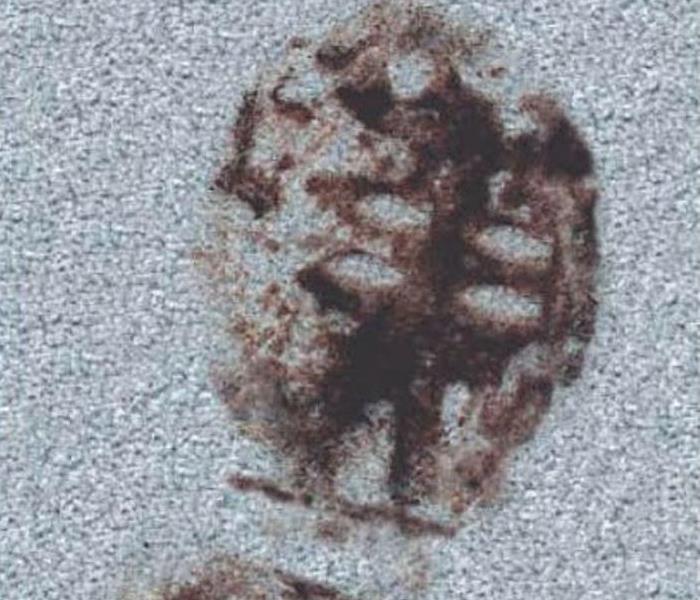 SERVPRO can remove most carpet staining.
SERVPRO can remove most carpet staining.
Maintenance Protects your Investment Flooring is a substantial investment —one you’ll want to protect for years to come. After all, the longer your flooring lasts, the less it costs. The initial cost for floor covering materials and installation does not fully encompass your total floor covering investment. The life cycle cost also factors in life expectancy of the carpet, costs for removal/disposal, lost revenues during renovations and maintenance costs over the life of the carpet.
Good maintenance helps protect your total flooring investment.
Maintenance Helps Carpet Last Longer and Cost Less Proactive, regularly scheduled maintenance removes soil before it can build up and damage carpet fibers. This can actually extend the life of the carpet, reducing the costs of restoration, replacement and disposal. Reactive maintenance cannot fully restore a carpet to a like-new appearance. This results in shorter carpet life and higher carpet life cycle costs.
Maintenance Is Good for the Environment
Our life cycle analysis of carpet shows that the overall environmental footprint of carpet is reduced by increasing the amount of time a carpet remains on the floor. A consistent, proactive maintenance program can significantly improve the appearance retention throughout the life of the carpet. Less carpet waste going to landfills is always good for the environment.
Creating a Carpet Maintenance Program
Once the importance of proper carpet maintenance is understood, we can create a comprehensive maintenance program for you.
Step 1: Make Preventive Maintenance a Priority Preventing soil from entering the environment is easier and less expensive than removing it from the carpet.
Here are five simple but important steps in a preventive maintenance program:
Keep Outside Areas Clean Outside maintenance helps minimize immediate sources of soil. The cleaner you keep sidewalks, parking lots, garages and other areas around the perimeter of your building, the less dirt that will be tracked inside.
Use Soil Barriers Walk-off mats, grates and removable elevator carpets help collect soil before it can be tracked throughout the building. Be sure soil barriers are large enough to allow for at least five steps across.
Vacuum daily, clean frequently and change often for best results. Protect Desk Areas Chair pads under desk chairs prevent casters from crushing carpet and grinding in soil. Specify eating, drinking and smoking areas By restricting these activities to limited areas, you can help confine certain difficult kinds of soil.
Maintain your HVAC System To remove many airborne particles before they are recirculated, regularly replace or clean filters on air-handling equipment. Airborne soil includes industrial wastes, auto emissions, tobacco smoke and pollen.
Step 2: Manage Soil with Regular Vacuuming Vacuuming is the most important dry soil management procedure. Effective vacuuming removes dry soil so that it cannot spread to other carpeted areas.
The level of effective vacuuming has two components: frequency and equipment type. Vacuuming Frequency
• Heavy- to moderate-traffic areas (entrances, elevator lobbies, reception areas, busy corridors, cafeterias, vending machine areas, employee lounges) should be vacuumed daily.
• Light-traffic areas (offices, conference rooms) should be vacuumed at least two to three times per week. Equipment Type
• Dual-motor vacuums are very effective machines for thoroughly cleaning heavy- to moderate traffic areas. This vacuum uses two motors to clean. One motor drives a beater-brush bar that knocks dirt loose, while the second motor provides suction that pulls dirt into the vacuum bag.
• Single-motor vacuums can be very effective machines depending upon their design. For the most part, they should only be used in light-traffic areas. They are generally less powerful than dual-motor vacuums, but easier to maneuver around furniture.
• Detail vacuums can be used to clean around the edges of a room or in confined areas around furniture.
• Carpet sweepers may be used to remove larger particle-sized surface dirt and small litter in high-visibility areas during the business day. However, they are not an effective cleaning method and should not take the place of thorough vacuuming.
The Carpet and Rug Institute has identified vacuum cleaners that meet industry criteria for removal efficacy, particulate emission and carpet damage.
Step 3: Promptly Remove Spills and Stains Although spills are inevitable, permanent stains do not have to be. Most stains can be avoided or removed by immediate, or at least same-day, treatment. It is good practice to have spot and stain removal products and equipment on hand for immediate use.
Correct identification of spots and stains is the first step in proper removal because some types of spills may require special cleaning solutions and techniques.
But for most spills, the basic removal procedure is the same:
1. Blot as much of the spill as you can with an absorbent towel. Always work toward the center of the spill. Do not rub! If the spill is solid or semisolid, gently scrape off what you can using a dull knife.
2. Apply a general-purpose carpet spotter to the spill. This is a detergent solution that is specially made for use on carpets. Never use other kinds of cleaning solutions, such as bleach. These may permanently damage the carpet.
3. Tamp or pat in the carpet spotter with a tamping brush.
4. Wait three minutes, then blot again.
5. Rinse with clean water, then blot as dry as possible. If the stain remains, repeat the entire process. If the stain persists after the second time, contact us here at SERVPRO of Wayne.
Step 4: Renew your Carpet with Proactive, Periodic Cleaning Even the most effective, consistent vacuuming may leave some soil behind.
Periodic cleaning improves the appearance and extends the life of carpet. Periodic cleaning also removes oily, sticky soil from the carpet that attracts and holds additional soil. Depending on soiling conditions and other factors, there are a number of available cleaning methods. Your choice of method should be based on what will be the most effective and compatible with your carpet and its traffic levels.
Contact us at 973-546-4977 if you have a service need or click here to visit our website to learn more about SERVPRO of Wayne's System Services.
Like Us on Facebook or Follow us on Twitter, Google+, or Instagram and follow the tips, tricks and advice we share with our community.
SERVPRO Emergency Ready Profile Continues To Improve
8/11/2017 (Permalink)
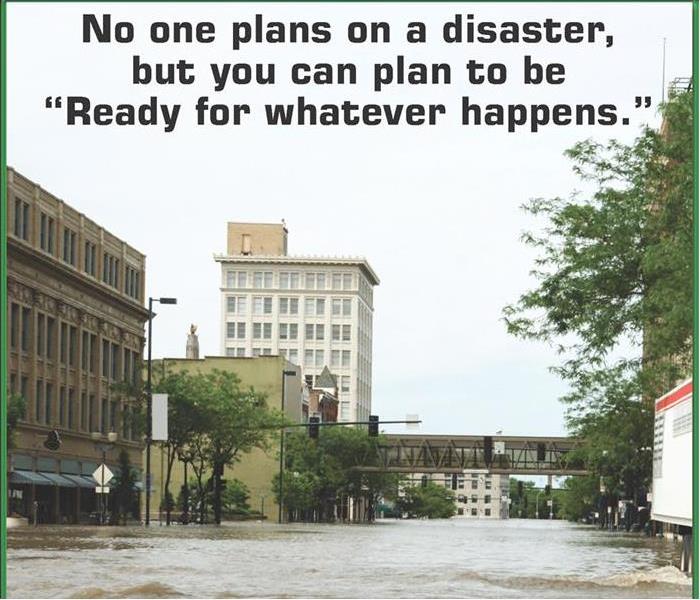 SERVPRO's Emergency READY Profile
SERVPRO's Emergency READY Profile
The SERVPRO Emergency READY Profile
SERVPRO Industries continues to make improvements to its already successful Emergency READY Profile.
The SERVPRO Emergency READY Profile is a startup approach that provides the critical information needed to begin mitigation and recovery services. It is designed to serve as a quick reference of important building and contact information. By working with SERVPRO’s Emergency READY Profile, your business can receive the benefit of over 40 years of experience in reducing the impact of any natural or man-made disaster. SERVPRO is a leader in water and fire damage response and can help you quickly get your property back in working order.
The SERVPRO Emergency READY Profile Advantage:
- A no cost assessment of your facility. – This means there is no need to allocate funds, giving you a great value at no cost.
- A concise Profile Document that contains only the critical information needed in the event of an emergency. – It will only take a little time to complete and will not take you away from current projects. But it will save a lot of time if ever needed.
- A guide to help you get back into your building following a disaster. – This can help minimize the amount of time your business is inactive by having an immediate plan of action.
- Establishes SERVPRO of Wayne as your disaster mitigation and restoration provider. – You have a provider that is recognized as an industry leader and is close by.
- Identification of the line of command for authorizing work to begin. – This saves time so we can begin the work of mitigating the damage which can save you time and money.
- Provides facility details such as shut-off valve locations, priority areas and priority contact information. – Having a quick reference of what to do, how to do it and who to call provides solutions in advance of an emergency so that during the emergency you are “Ready for whatever happens.”
The Best Way to Reduce Business Interruption Following a Disaster is to Plan For it NOW.
As many as 50% of businesses close down following a disaster, according to the latest research. Of the businesses that survive, the overwhelming majority of them had a preparedness plan in place. Pre-planning can serve as an insurance policy aimed at peace of mind. And knowing you are “Ready for whatever happens” speaks trust to your clients and employees that in the event your business is affected by a disaster, they don’t necessarily have to be.
By developing a SERVPRO Emergency READY Profile for your business, you help to minimize business interruption by having an immediate plan of action. Knowing what to do, who to call and what to expect in advance is helpful in receiving timely mitigation and can help minimize the effects water and fire damage can have on your business.
Are You Ready?
Preparation is a key component for making it through any size disaster, whether it’s a small water leak, a large fire or an area flood. The best time for planning for such events is not when the event happens, but well before it happens. No one ever plans on a disaster, but you can plan for it. Now is the time to ask yourself, are you ready for whatever happens?
Call Today to Get Started!
Contact us at 973-546-4977 if you have a service need or click here to visit our website to learn more about SERVPRO of Wayne's System Services.
Like Us on Facebook or Follow us on Twitter, Google+, or Instagram and follow the tips, tricks and advice we share with our community.
Crisis Communication
10/21/2016 (Permalink)
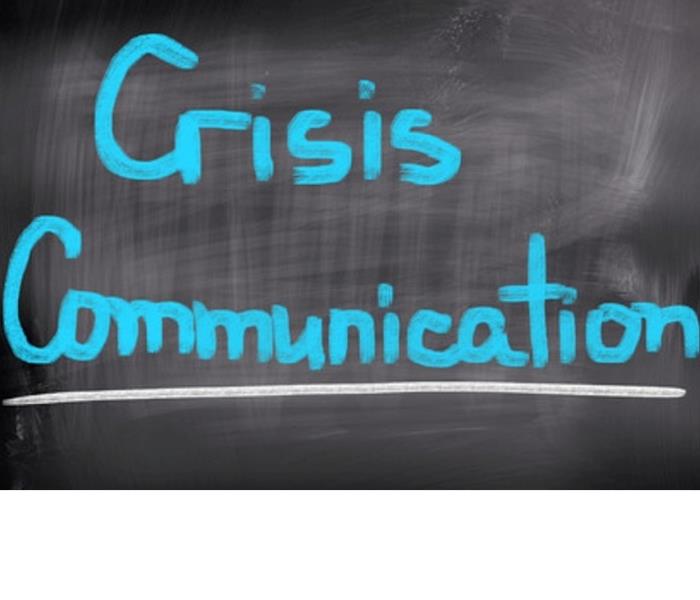 Business Crisis Management
Business Crisis Management
Crisis Communications – Engaging Stakeholders During an Incident
Courtesy of The American Red Cross.
Trust is the foundation of relationships. When your organization faces an emergency, communications (or the lack thereof) to your employees, customers, and other stakeholders can support or erode that foundation. Protect your organization’s reputation and relationships by being prepared to communicate in a crisis.
In an event, you need to know who to communicate to and how and when to do so. This requires pre-planning. Make sure your emergency response plans have a communication component so you will know how to respond to each risk your organization faces. Essential components of a crisis communication plan include:
- Stakeholders: Identify the individuals and public or private groups your organization interacts with. Internal stakeholders include employees, volunteers, members of the board of directors, etc. External stakeholders include customers, suppliers, service providers, vendors, public and regulatory authorities, and the media. Think about what information each group would need to know from you during a crisis and what you would need to know from them.
- Spokesperson: Identify a single individual or small team that will handle dissemination and receipt of information from stakeholders.
- Strategy: Transparency and timeliness of communications are critical during an incident. Plan in advance what and how you are going to communicate with internal and external stakeholders, including alternate ways of accessing and sharing information. General statements, also called holding statements, can be prepared in advance and are released to stakeholders during an incident before detailed facts come in. For example, an organization operating in an area affected by a hurricane would release: “Our thoughts are with those who are in harm’s way and those responding to the storm. We have implemented our crisis plan and will be supplying additional information as it becomes available.” Review and revise these statements on a regular basis to make sure they remain timely and appropriate.
In developing your communications strategy and holding statements, consider the unique environment your organization operates in. For example, is litigation a concern? If so, it is prudent to include your legal counsel.
Once you have your communications plan, make sure it is part of your emergency preparedness training. The spokesperson or communications team should practice drafting communications when plans are exercised.
When the unexpected does occur, craft a message that is honest, clear, and concise. Foremost, assess the situation and collect facts. Your communications to stakeholders should be fact focused and not prospective. Explain what went wrong, commit to addressing the situation.
Be empathetic in your communications by including expressions of concern for those involved in the incident, your stakeholders, and the community. Don’t be afraid to say ‘I don’t know’ but be willing to go find the answer where appropriate. Your concern and honesty will support the trusting relationship you want to preserve through the crisis.
For more information on stakeholder identification and crisis communication, refer to Guidance on Crisis Communications and Emergency Response Notification Procedures at ReadyRating.org.
Commercial Post Construction Cleaning Services
8/18/2016 (Permalink)
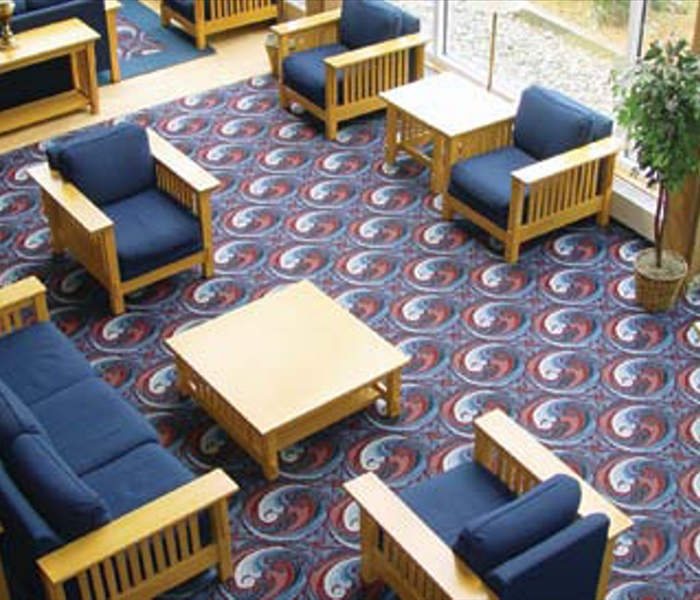 Office building lobby after post construction cleaning services.
Office building lobby after post construction cleaning services.
Structural integrity, materials, labor, safety, customer satisfaction and deadlines - the list goes on and on when building a commercial facility. The bottom line, however, is you are responsible for getting the doors open on time. SERVPRO® of Wayne Professionals can help you meet your deadlines by providing thorough post-construction services in a timely manner. These services include:
Post Construction Cleaning
Once the floors are down and the drywall is up, it’s time to remove the debris and dirt in order to lay carpet, paint and decorate. SERVPRO® of Wayne Professionals can provide the debris removal services to prepare the building for interior design.
Dehumidification and Drying
During the construction phase, a building can trap moisture. Excessive moisture could result in mold growth. If you think one of your projects may have a moisture issue, rely on SERVPRO® of Wayne Professionals to provide the help you need eliminating moisture and preventing the potential for mold growth.
Final Cleaning
You want the facility to look its best when the doors open. Your local SERVPRO® of Wayne Professional provides cleaning services to give the building that extra shine. Services include:
- Carpet, resilient and non-resilient floor prep and finish
- Ceiling, walls and fixture cleaning
- Deodorization
- Air Duct Cleaning
- Debris Removal (if necessary)
- Window Cleaning
To learn more about all of the SERVPRO® services, visit our website.
Restoring Your Commercial Property After A Water Damage Event
6/24/2016 (Permalink)
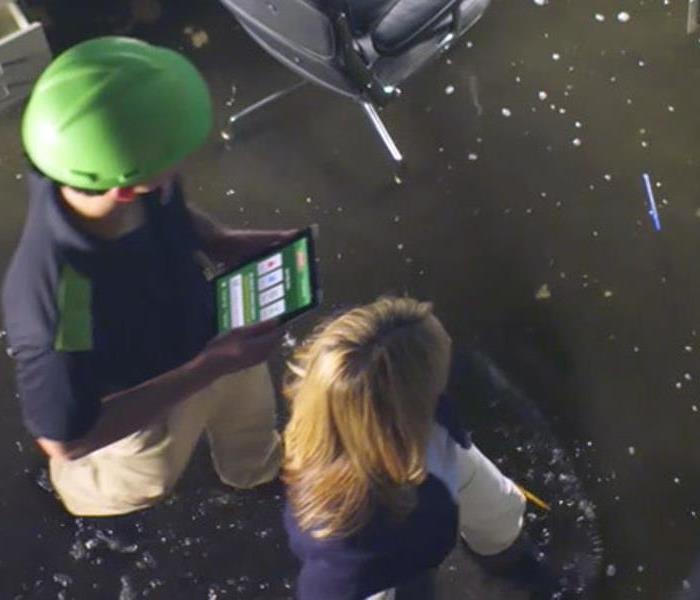 Don't let a water damage control your business
Don't let a water damage control your business
Flooding and water damage events at commercial properties are often complex with numerous issues that require a knowledgeable and flexible response. Whether we’re dealing with a relatively small water cleanup scenario or a large scale event, we work quickly to assess each unique situation and isolate the damaged area. In many instances, normal operations can continue in a temporary space while we restore your facility.
Restoring Commercial Properties Presents Unique Challenges
Our professionals are trained to be mindful of legal and environmental concerns and strive to fully restore the damaged area while working within your budgetary constraints. We understand that every hour spent cleaning up is an hour of lost revenue and productivity. So when an emergency situation arises in your business, give us a call and we’ll be there fast with the help you need.
About SERVPRO of Wayne
SERVPRO of Wayne specializes in the cleanup and restoration of commercial and residential property after a water damage event. Our staff is highly trained in property damage restoration. From initial and ongoing training at SERVPRO’s corporate training facility to regular IICRC-industry certification, rest assured our staff is equipped with the knowledge to restore your property.
The SERVPRO Emergency Ready Profile
11/21/2015 (Permalink)
The SERVPRO Emergency READY Profile
The SERVPRO Emergency READY Profile is a startup approach that provides the critical information needed to begin mitigation and recovery services. It is designed to serve as a quick reference of important building and contact information. By working with SERVPRO’s Emergency READY Profile, your business can receive the benefit of over 40 years of experience in reducing the impact of any natural or man-made disaster. SERVPRO is a leader in water and fire damage response and can help you quickly get your property back in working order.
The SERVPRO Emergency READY Profile Advantage:
A no cost assessment of your facility. – This means there is no need to allocate funds, giving you a great value at no cost. A concise Profile Document that contains only the critical information needed in the event of an emergency. – It will only take a little time to complete and will not take you away from current projects. But it will save a lot of time if ever needed. A guide to help you get back into your building following a disaster. – This can help minimize the amount of time your business is inactive by having an immediate plan of action. Establishes SERVPRO of Wayne as your disaster mitigation and restoration provider. – You have a provider that is recognized as an industry leader and is close by. Identification of the line of command for authorizing work to begin. – This saves time so we can begin the work of mitigating the damage which can save you time and money. Provides facility details such as shut-off valve locations, priority areas and priority contact information. – Having a quick reference of what to do, how to do it and who to call provides solutions in advance of an emergency so that during the emergency you are “Ready for whatever happens.” The Best Way to Reduce Business Interruption Following a Disaster is to Plan For it NOW.
As many as 50% of businesses close down following a disaster, according to the latest research. Of the businesses that survive, the overwhelming majority of them had a preparedness plan in place. Pre-planning can serve as an insurance policy aimed at peace of mind. And knowing you are “Ready for whatever happens” speaks trust to your clients and employees that in the event your business is affected by a disaster, they don’t necessarily have to be.
By developing a SERVPRO Emergency READY Profile for your business, you help to minimize business interruption by having an immediate plan of action. Knowing what to do, who to call and what to expect in advance is helpful in receiving timely mitigation and can help minimize the effects water and fire damage can have on your business.
Are You Ready?
Preparation is a key component for making it through any size disaster, whether it’s a small water leak, a large fire or an area flood. The best time for planning for such events is not when the event happens, but well before it happens. No one ever plans on a disaster, but you can plan for it. Now is the time to ask yourself, are you ready for whatever happens?
Call Today to Get Started!
or visit SERVPRO.com/Ready
Dry Ice Blasting
11/20/2015 (Permalink)
What Is Dry Ice Blasting
Dry ice blasting is a revolutionary blasting method that uses dry ice pellets (CO2 in solid form) as the blasting material. The process is very environmentally friendly and provides a fast and effective alternative to traditional methods of cleaning industrial production equipment.
Dry Ice Blasting Is A Three-Step Process
Kinetic: When dry ice pellets are accelerated in a jet of compressed air and strike a surface at the speed of sound, they crack and loosen the coating of the surface being treated.
Thermal: The low temperature of dry ice pellets (-79oC/-110oF) makes the coating brittle, cracks it and loosens it. This allows dry ice to permeate the coating.
Sublimation: Dry ice penetrates the coating and immediately sublimes (passes directly from solid to vapor state). This results in a 700-fold increase in volume, an explosive effect that lifts the coating off the surface.
The Benefits Of Dry Ice Blasting
A Dry Cleaning Process: Dry ice blasting is a completely dry process because dry ice pellets consist of CO2 and vaporize immediately on contact with the surface to be cleaned.
No Waste Disposal: The system produces no waste products. Only the coating that has been removed remains to be disposed of, and this can usually be swept or vacuumed from the floor.
Environmentally Friendly: Dry ice blasting is completely non-toxic and no hazardous chemicals are used. Costs connected with the disposal of blasting materials and solvents are saved.
No Abrasion: Dry ice blasting is non-abrasive and therefore surfaces are treated very gently. Wear and tear resulting from the use of steel brushes, scrapers and other blasting materials is avoided.
Improved Production Quality: Dry ice blasting often allows for your production equipment to be cleaned while in operation without a need for dismantling or costly downtime.






 24/7 Emergency Service
24/7 Emergency Service





















